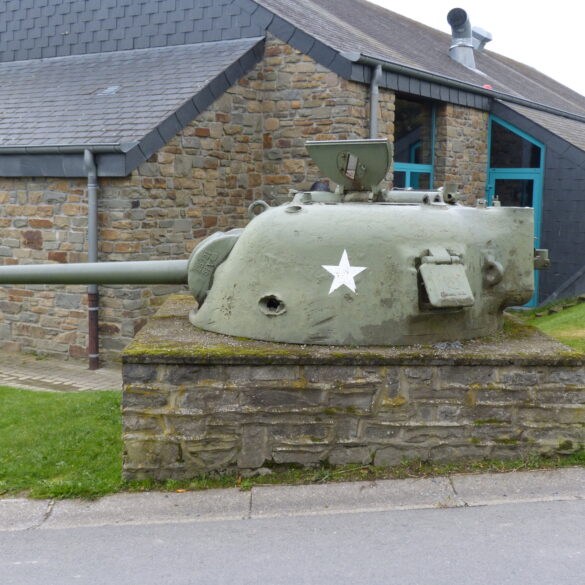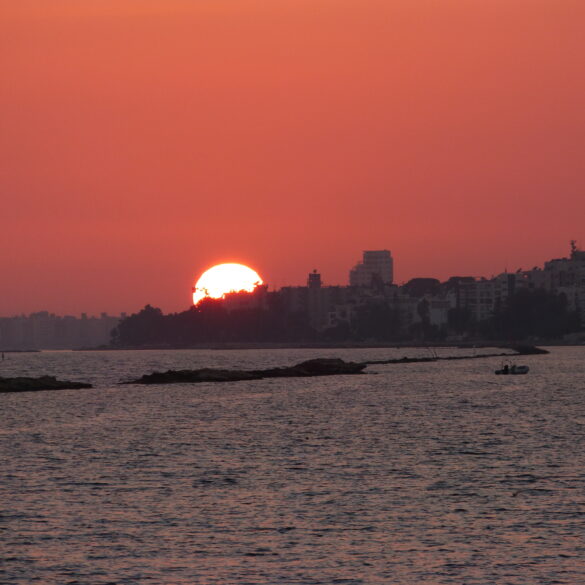The weekend of October 25th we made a trip to Berchtesgaden, Germany. We left home at about 9:30 Friday morning and arrived at the hotel to check in at about 3:00 p.m. It’s about a 5-hour drive, excluding stops, so it’s a bit of a long trip for just 2 nights but definitely worth it.
Even from the Autobahn, some of the views on the drive there are beautiful, as you can see here.
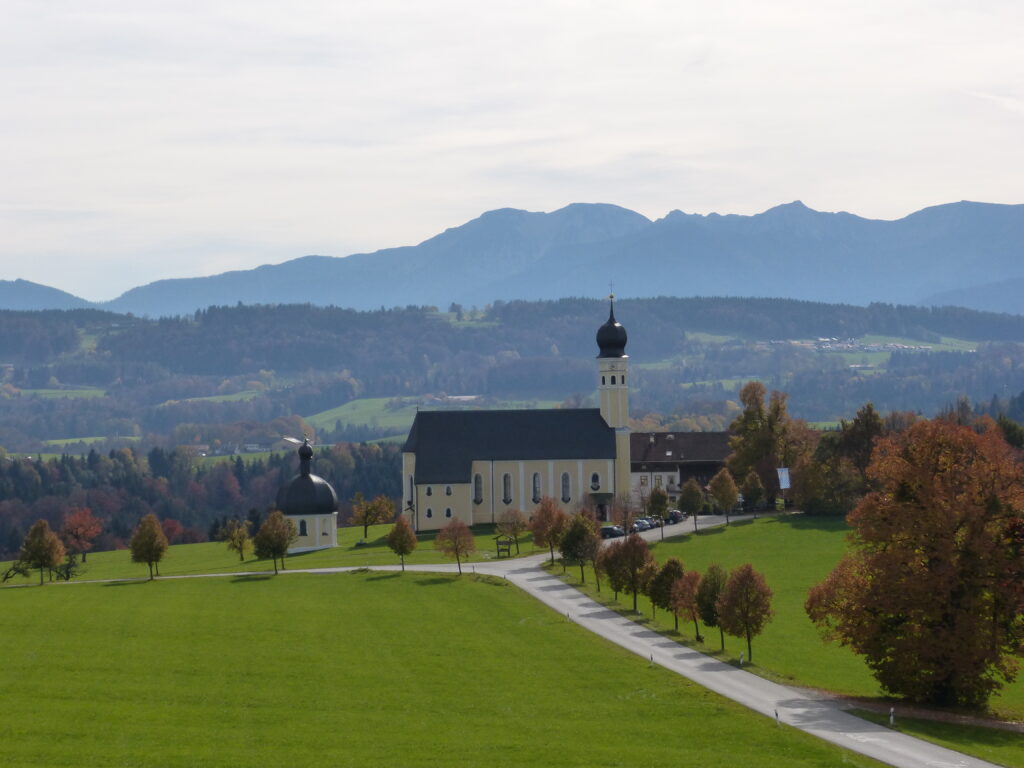
That photo was taken from a little parking/rest area along the Autobahn.
Sean had told me that he’d rented a suite at the hotel. Upon check-in, we found out that it was the honeymoon suite.
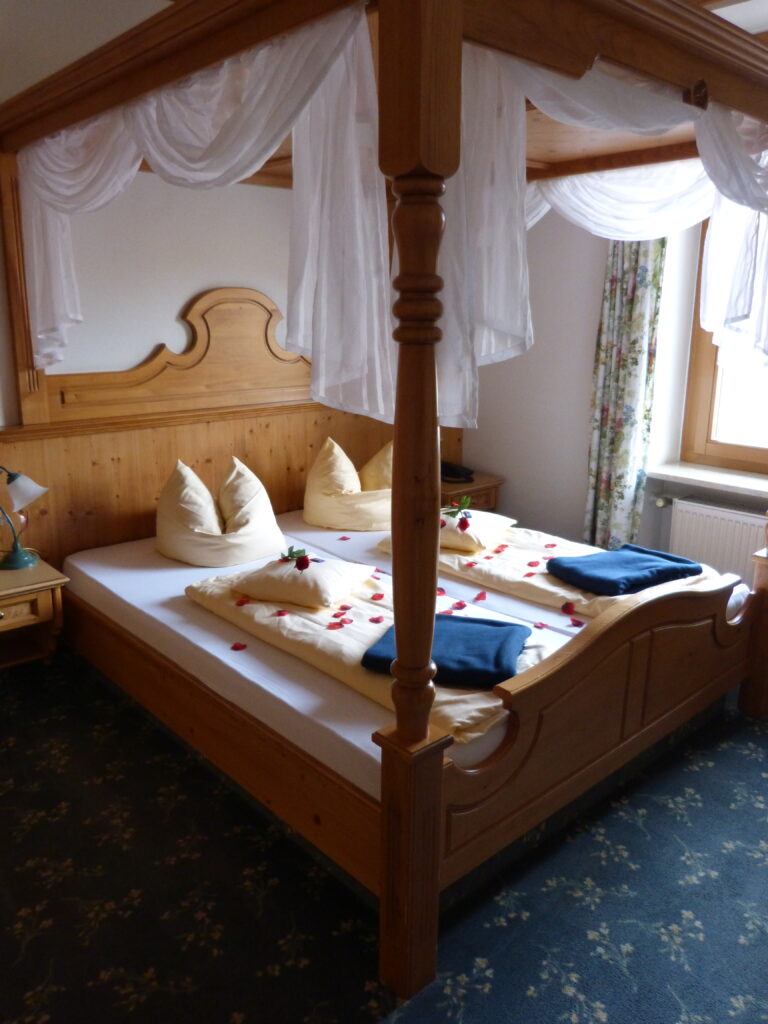
The plastic roses and petals were a nice touch.
One thing you may notice in this photo is that there is no flat sheet on the bed. Unless you stay at an American chain such as the Marriott, most hotels in Europe are going to have only a fitted sheet on the bed and then a duvet. I like the room to be fairly cold when I sleep. I always have a fan blowing on me at night whenever possible, regardless of the season. Whenever we are able to drive to an overnight destination, I take an electric fan with me so I can use it in the hotel room. So, in hotel rooms with no flat sheet, I end up taking the cover off the duvet and using that as a top sheet. I’m sure the housekeeping staff hates me wherever I go.
Another nice touch was that the canopy of the bed had twinkling lights and a mirror.
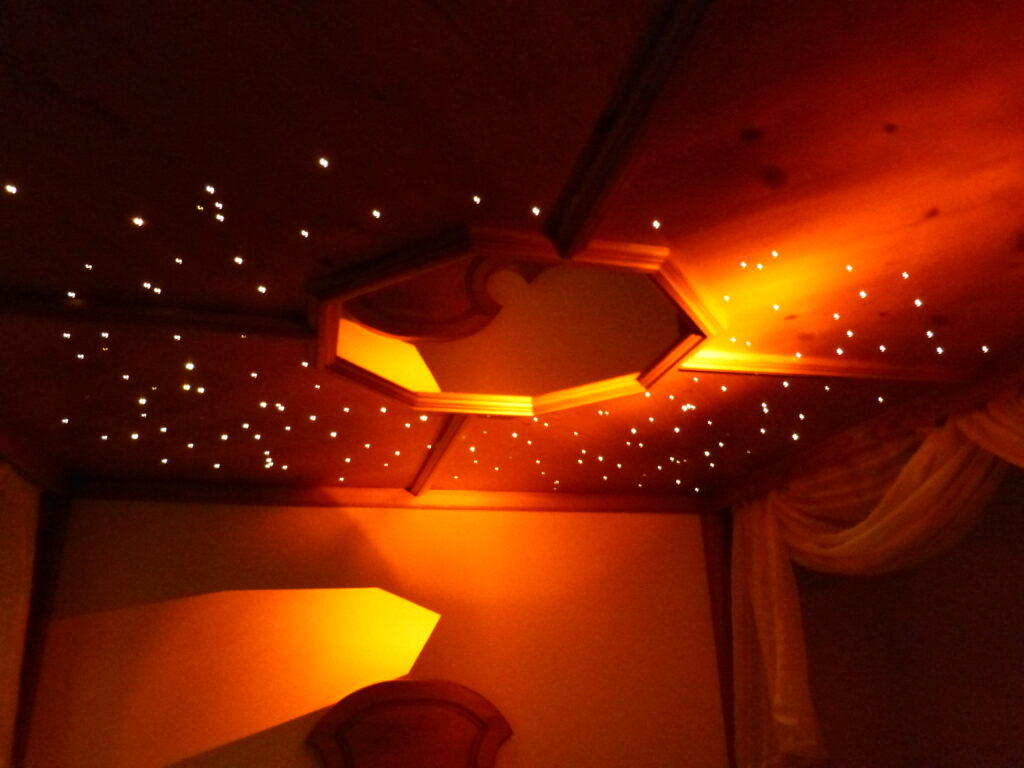
The bathroom sink was very fancy schmancy in this hotel.
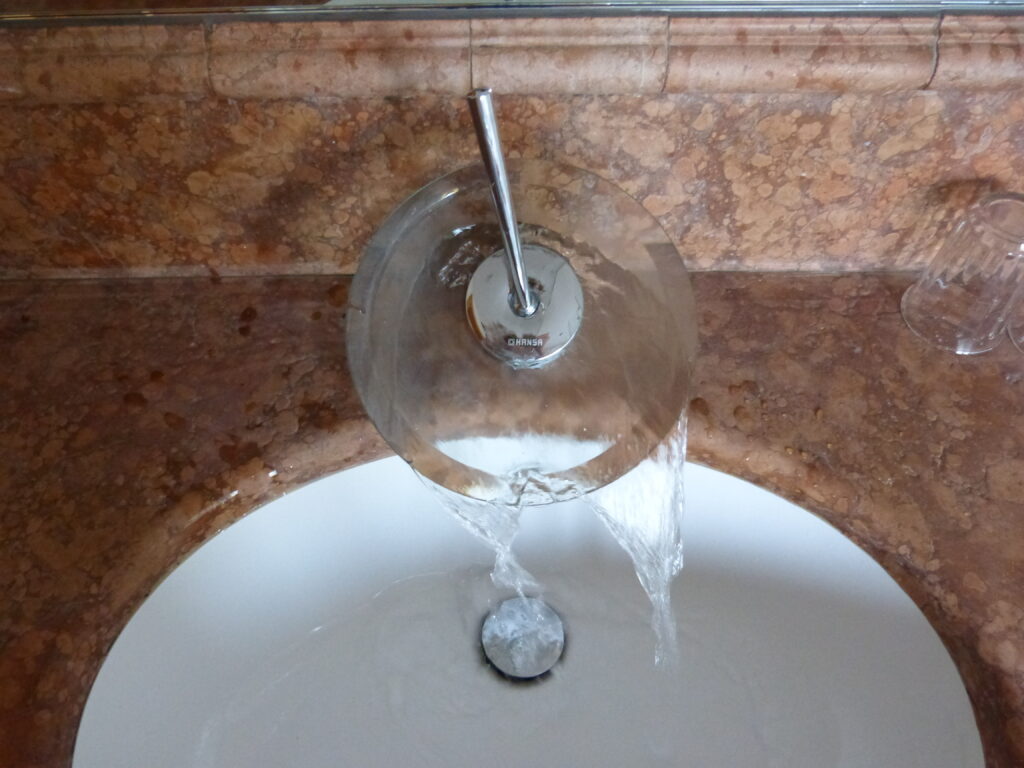
There was a glass disc type of thing around the faucet and the water ran off of the disc. It seemed a little inefficient to me but it looked cool.
Our room had a little balcony with a table and chairs, and this was one of the views from the balcony.
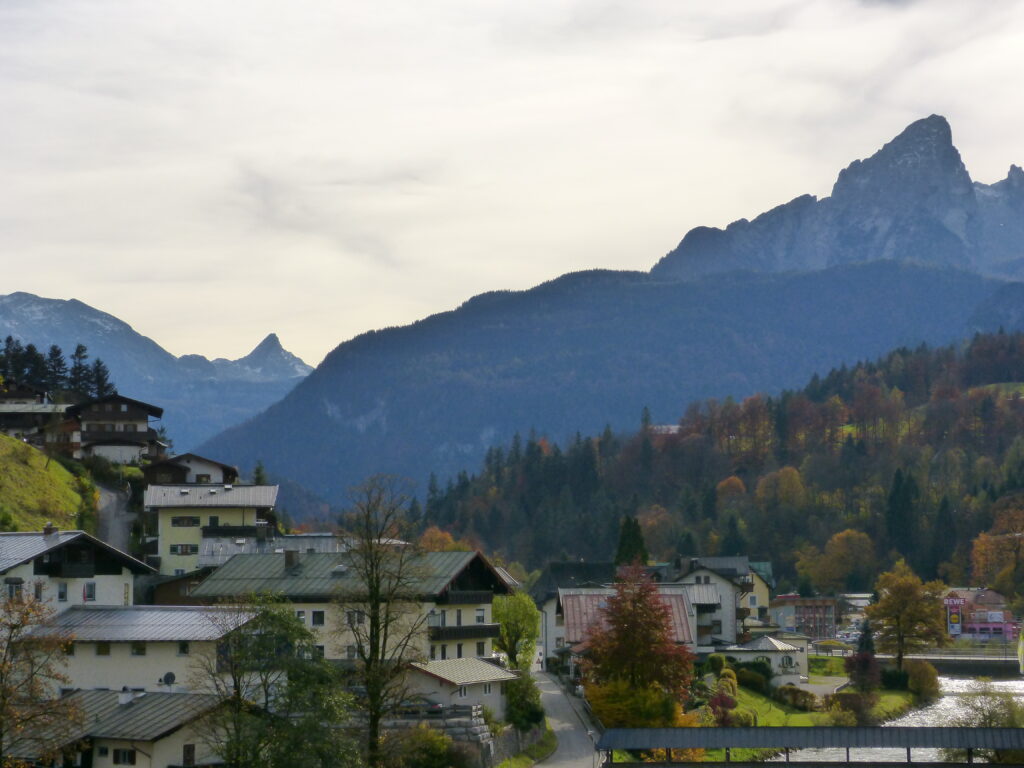
And this was another.

We didn’t have many daylight hours left after arriving at the hotel but we took a drive to the nearby Königssee to check it out. König means “king” in German and See means “lake”, so Königssee is King’s Lake. It’s a glacial lake surround by mountains.
Here are some ducks at the lake, and you can see how incredibly clear the water is.
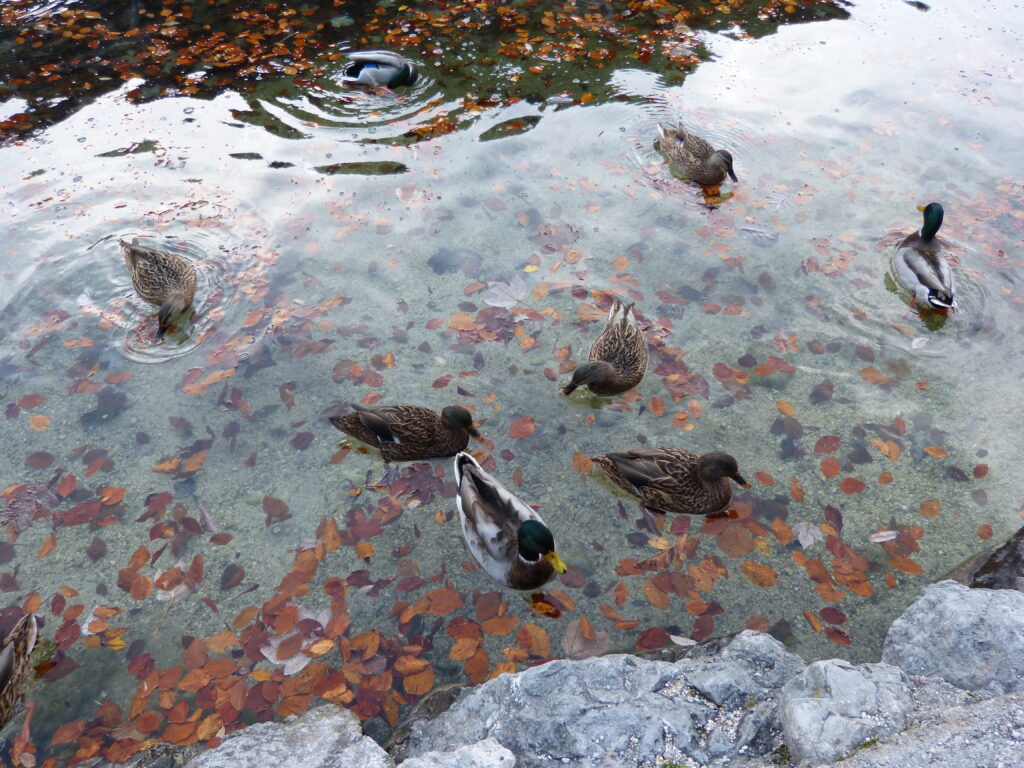
The structures you see here are boathouses.
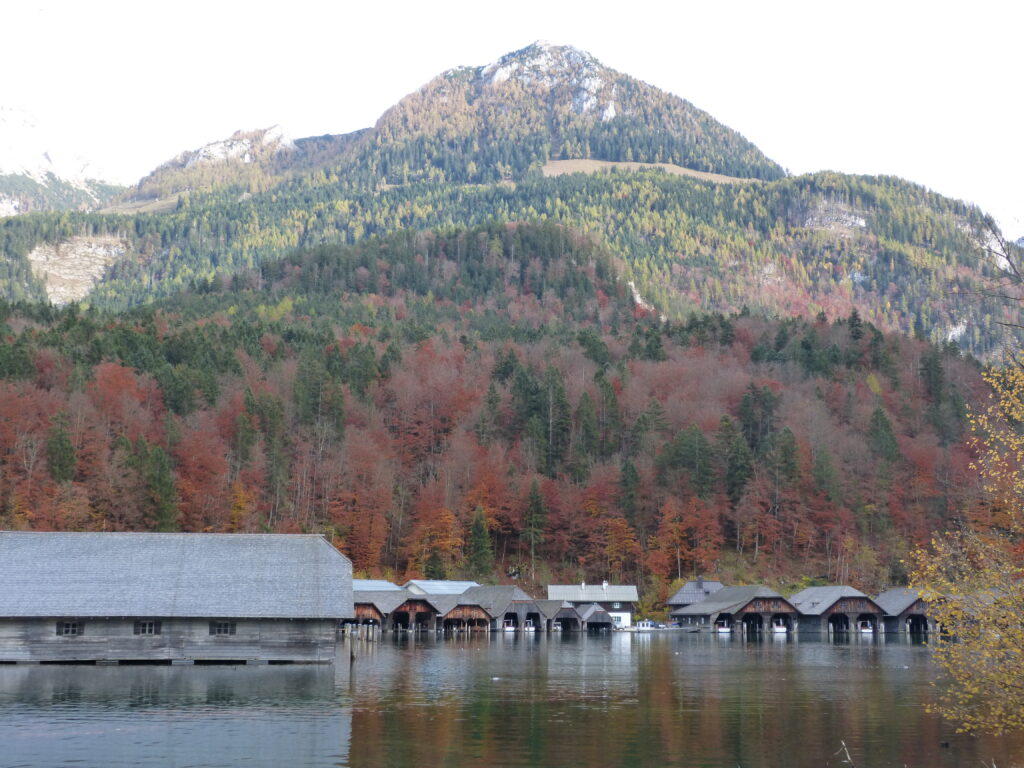
Taking a boat trip on the Königssee is a very popular thing to do. The company who runs the boats has a fleet of 18 boats. Although they have a schedule, they apparently run boats as needed. We took a boat trip on Sunday morning before heading home, so there will be photos of that later. The schedule said that the first three boats departed at 9:30, 9:55 and 10:40, but they were running non-stop due to the crowds the day we were there. The first boat left at just before 9:30 and we made it onto the second boat, which left just a few minutes later.
This is a close-up of Hitler’s Eagle’s Nest, which we could just glimpse from the Königssee. We did a tour on Saturday that included a visit to the Eagle’s Nest, so there will be more on this later as well.
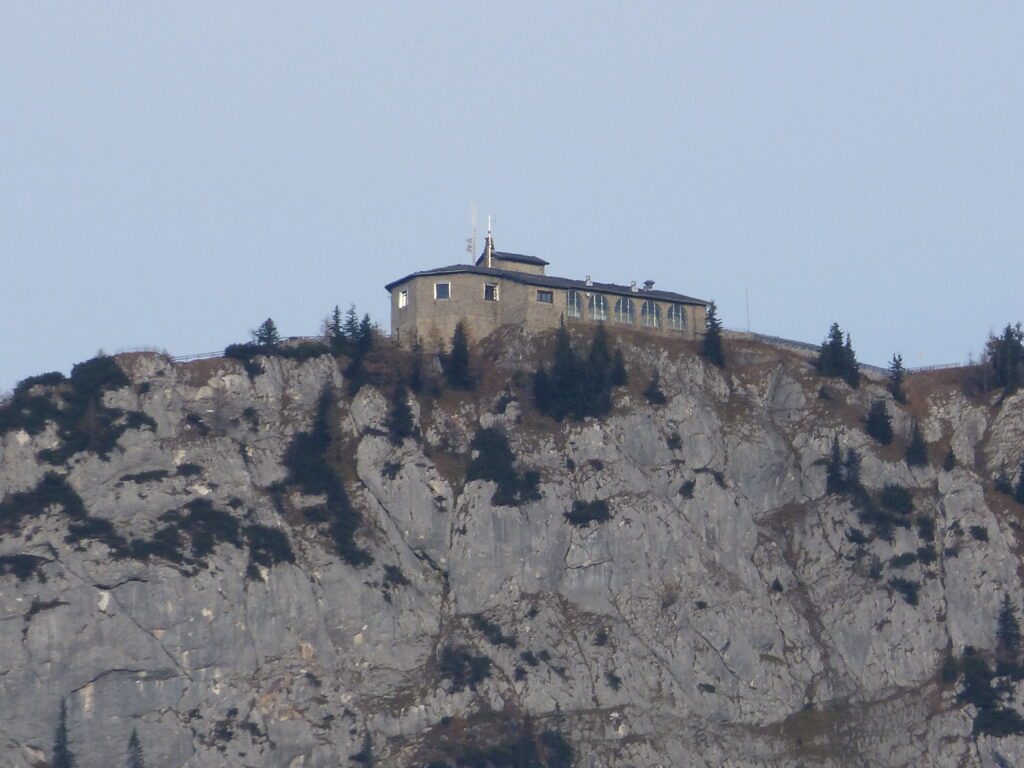
After our brief visit to the lake, we dropped the car back off at the hotel and walked into town for dinner.
On the way, we made a detour through the Old Berchtesgaden Cemetery, which was founded in 1685. One of the locally famous people buried there is Anton Adner.
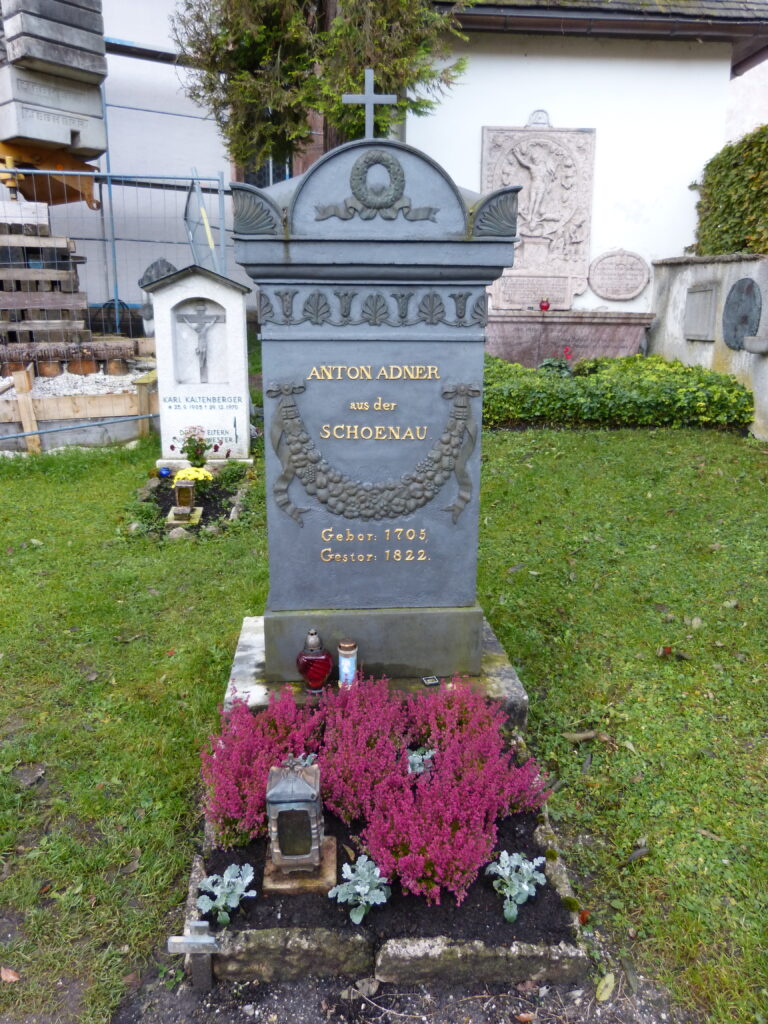
His gravestone indicates that he was born in 1705 and that he died in the year 1822, making him about 117 years old when he died.
At the age of 110 or so, Herr Adner climbed the southern tower of the Frauenkirche cathedral in Munich. This tower is over 300 feet high. I myself have never climbed it but now I feel sort of shamed into doing it and will have to add it to my bucket list.
Adjacent to the cemetery is the Franziskanerkirche (Franciscan church) and we took a look inside. I always love seeing the Keg O’ Holy Water in a church.
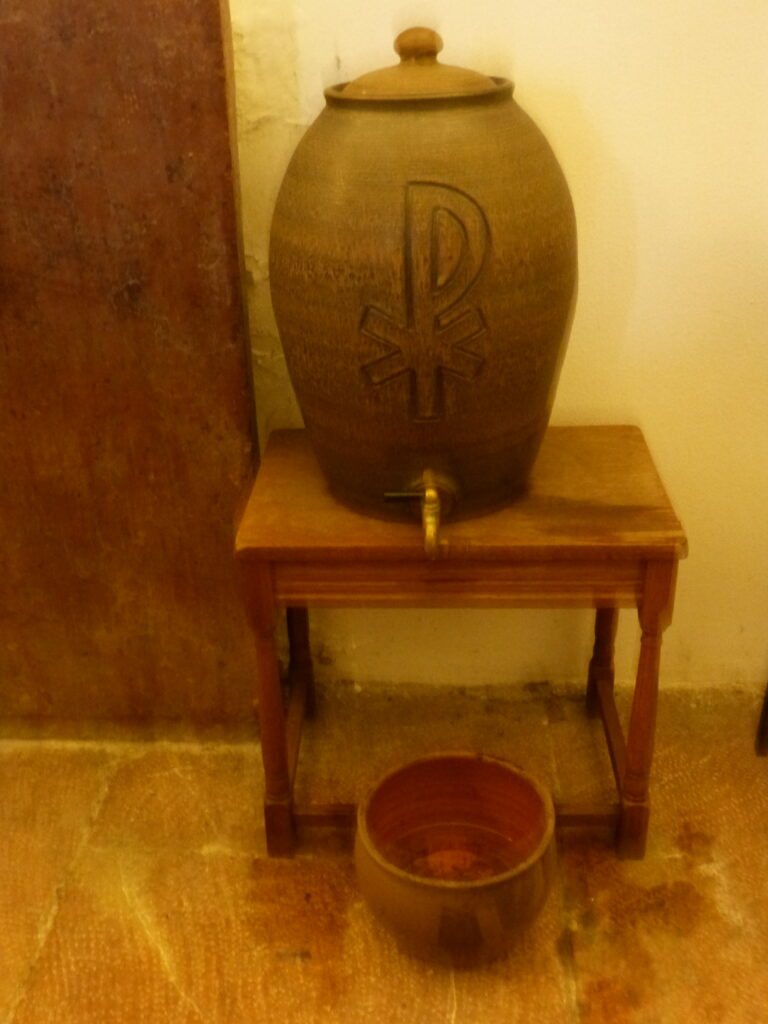
Our hotel had an honor bar on the ground floor. How it works is they have a refrigerator full of drinks and slips of paper on top of the fridge. You put your room number on the slip of paper and indicate how many of each type of drink you took, and they add it to your room bill.
Sean got some of the local bottled beer to take up to the room and we had a few drinks before retiring for the evening.
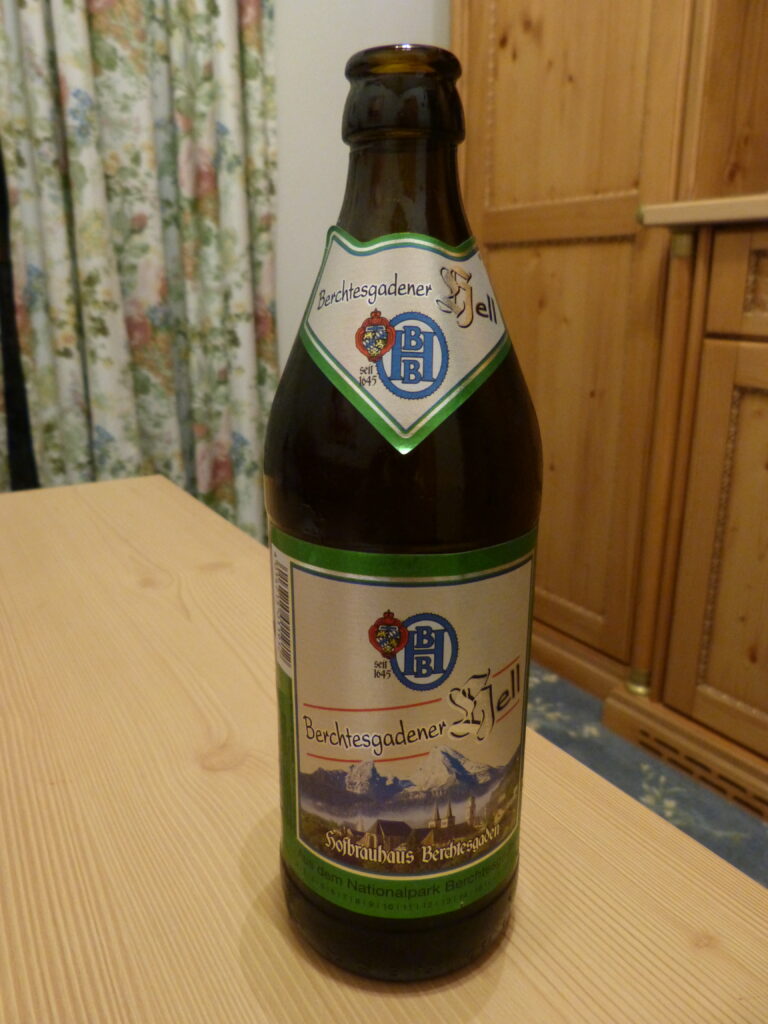
You may be able to see on the label that the name of the beer is Berchtesgadener Hell. Hell (or Helles as it’s sometimes called) is a type of light-colored beer in Germany and is not indicative of a place to which some people think they will be banished in the afterlife.
The next day was an absolutely beautiful, sunny, clear, blue-skied day with a high temperature of about 75 degrees Fahrenheit. This is very unusual for Berchtesgaden at this time of year. In fact, when we’d decided a few weeks ago to book this trip, I checked the weather and that evening the forecast was calling for a rain and snow mix. I was fully prepared for the worst but got the best.
We had a tour booked for 1:15 pm so we had a little time before that to check out some other sites after breakfast at the hotel.
On our way to the first site, Sean stopped the car so we could check out the views looking back over the town.
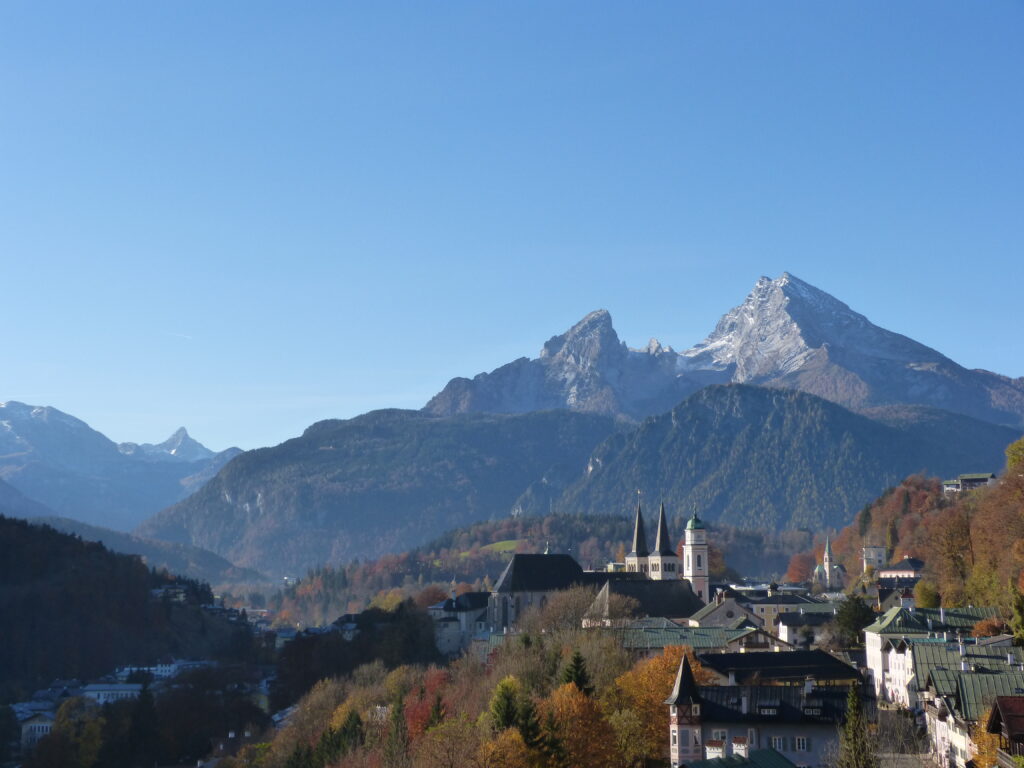
That mountain you see towards the right-hand side of the photo is the Watzmann and it is the third-highest mountain in Germany.
Our first destination of the day was the pilgrimage church of Maria Gern, which was completed in the year 1710.

I haven’t been able to find any good information on why people make pilgrimages there, but it has something to do with an image of the Madonna and Child in the church.
We were able to go inside the church but couldn’t walk down the aisle to see anything up close because it was gated off. I was still able to get a few photos through the gate.

You may be able to make out the statue on the altar that looks like it’s surrounded by rays of sunshine, and that’s the statue that everyone goes to see.
There were more beautiful views from outside the church.
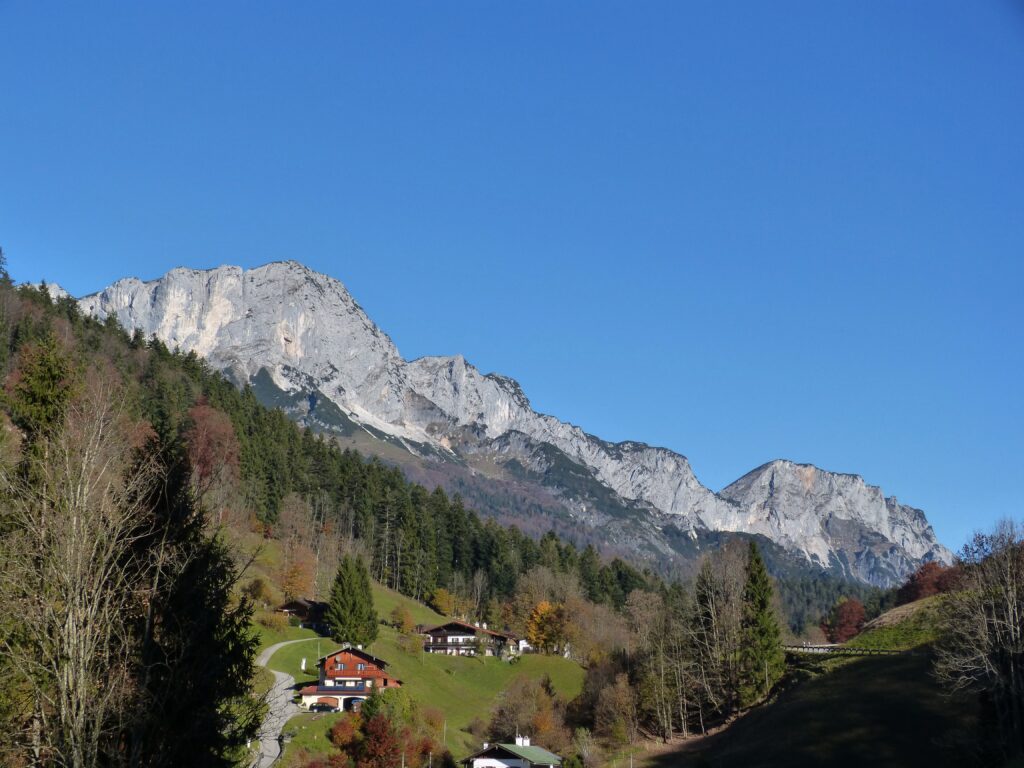
After leaving the church we went driving on the mountain road for a bit. This was a view from one part of that road.
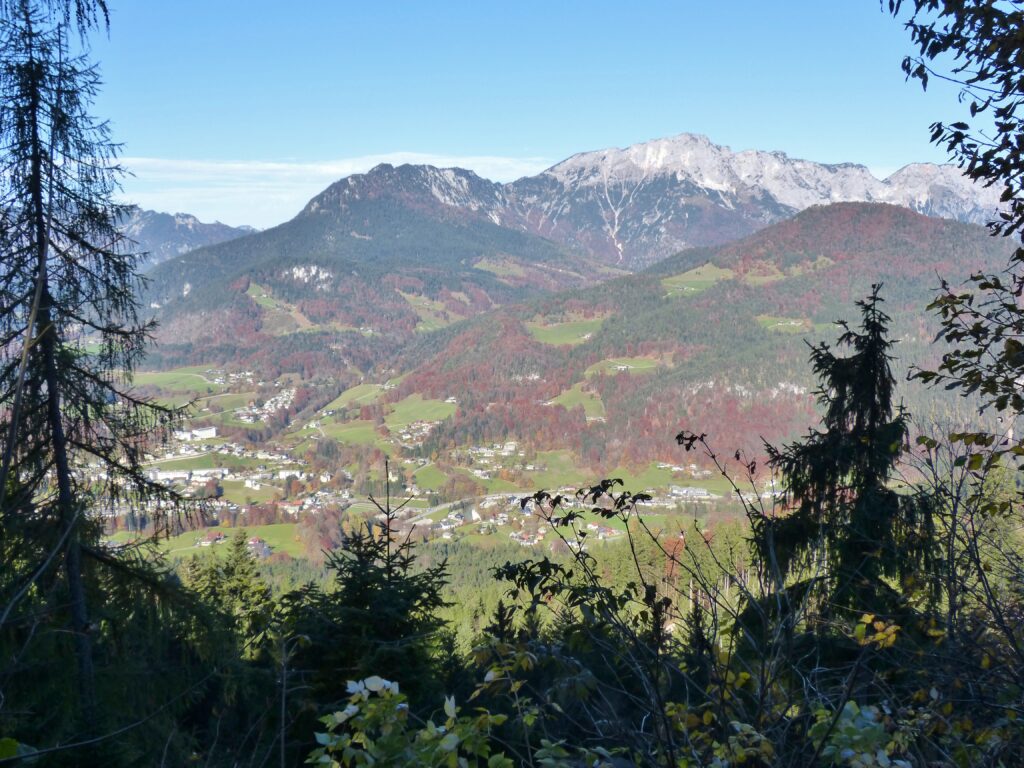
I don’t think I’ve ever taken so many scenery photos on a trip. Every view we saw was just better than the last and they were all truly breathtaking.
On the mountain drive, we saw a sign for this thing called the Sommerrodelbahn and went to check it out.
The Sommerrodelbahn is a toboggan run on a metal track and you can ride it for only $2.30 Euro per trip. How could we pass that up?
Here’s a photo Sean took of me coming to the end of my toboggan trip.
(Sean’s photos)
He had gone on the track ahead of me and when he was finished he had plenty of time to get his camera out and take the photograph because a speed demon I am not. At one point in the track there’s a speedometer and Sean said he passed it at about 21 kilometers (around 13 miles) per hour. I, on the other hand, passed it at a snail’s pace of about 9 kilometers (5.5 miles or so) per hour. There was a little boy on the run behind me and I’m sure he was sorely disappointed at not being able to speed past me. Despite my slow speed, it was fun!
After the toboggan ride we went back to the hotel to drop the car off before our 1:15 tour. The tour began at the Tourist Information (TI) office, which was a short walk from our hotel.
Check out this picture that was hanging in the bedroom of the hotel suite.
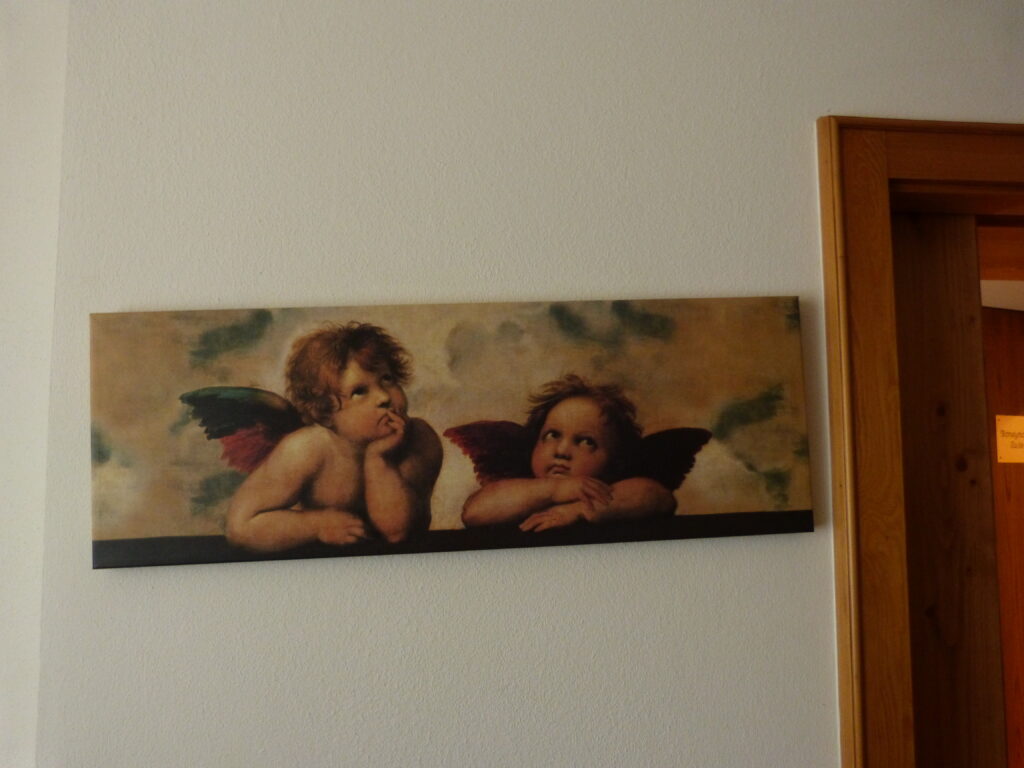
Those of you with a touch of OCD like me will relate. Look at the right-hand side of the picture in relation to the doorframe. Seriously, how could any civilized person think this is OK?
This is much better.
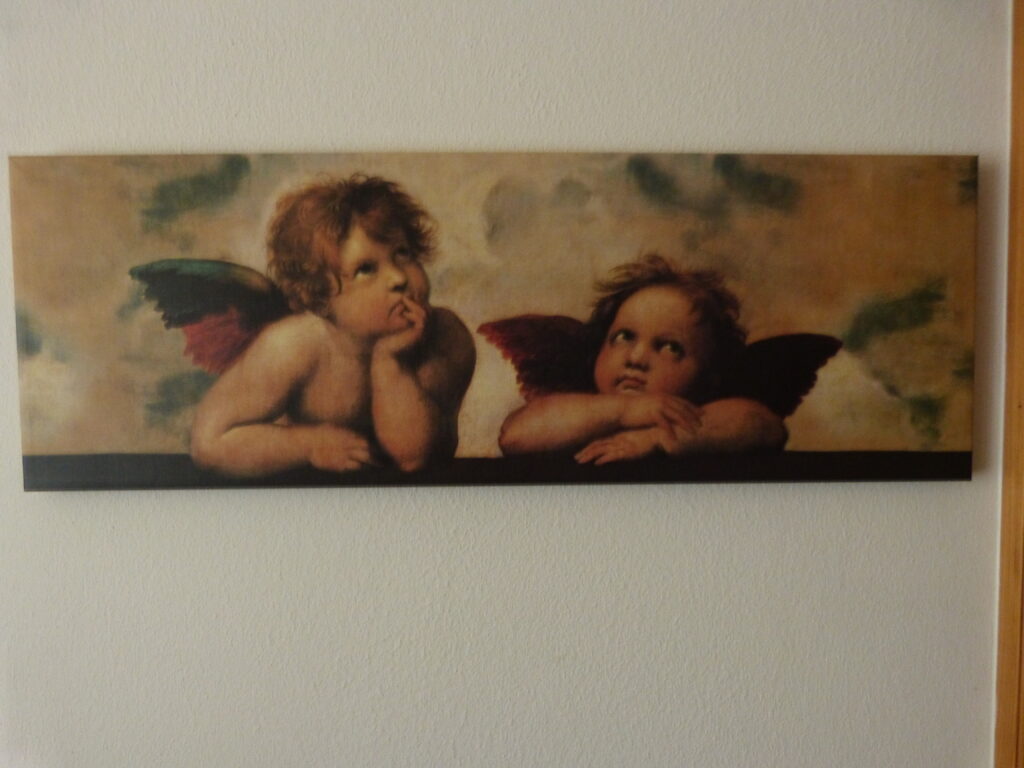
We still had a little time before the tour, so we checked out the train station, which is diagonally across the street from the TI.
The reason we wanted to check it out is because we’d read that it was a Nazi-era building and also that there were some nice murals on the walls inside.
Here is one of the murals, which were painted in 1950.
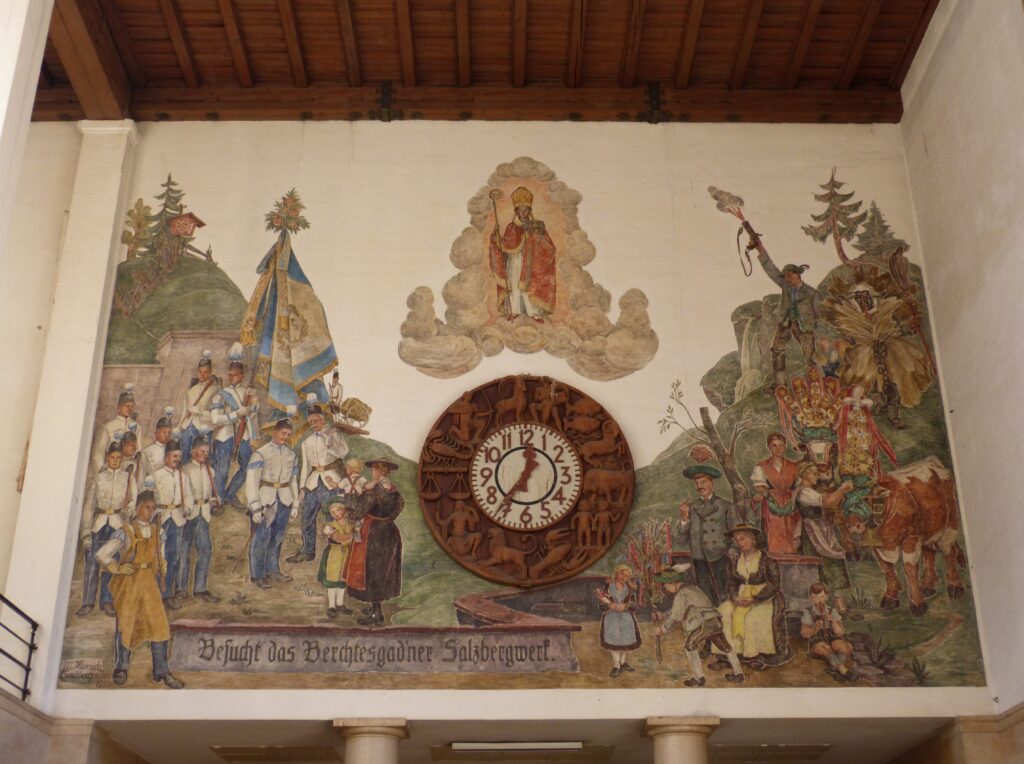
And here is the other.
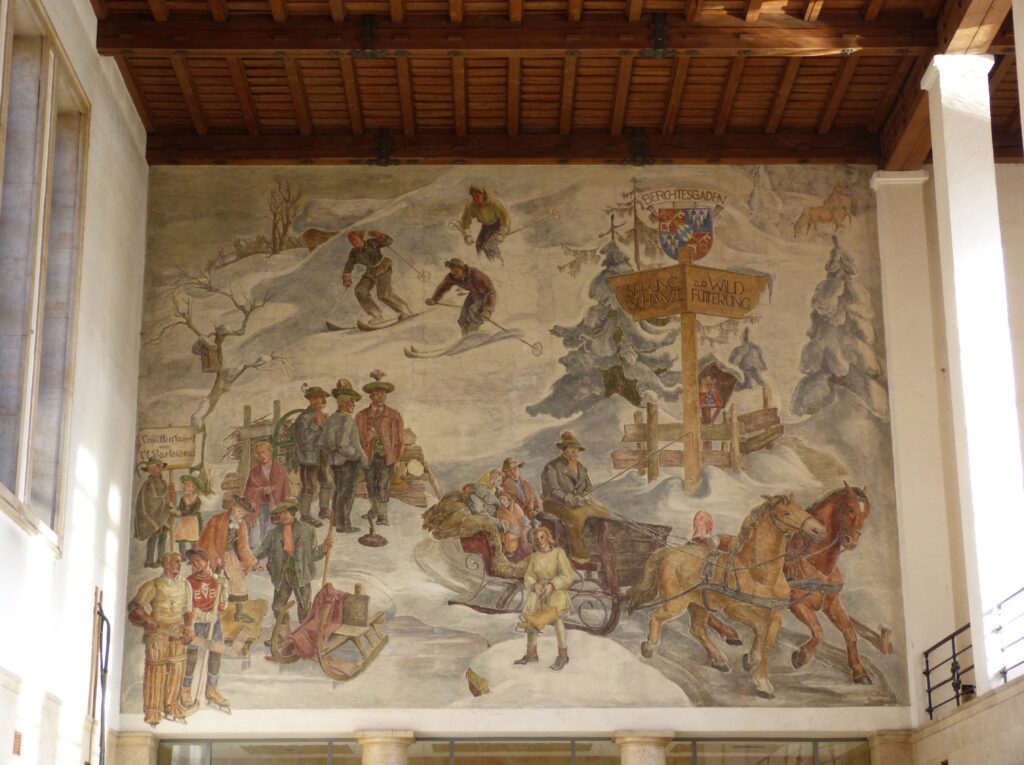
Here’s a photo of the train station that I took from in front of the TI.
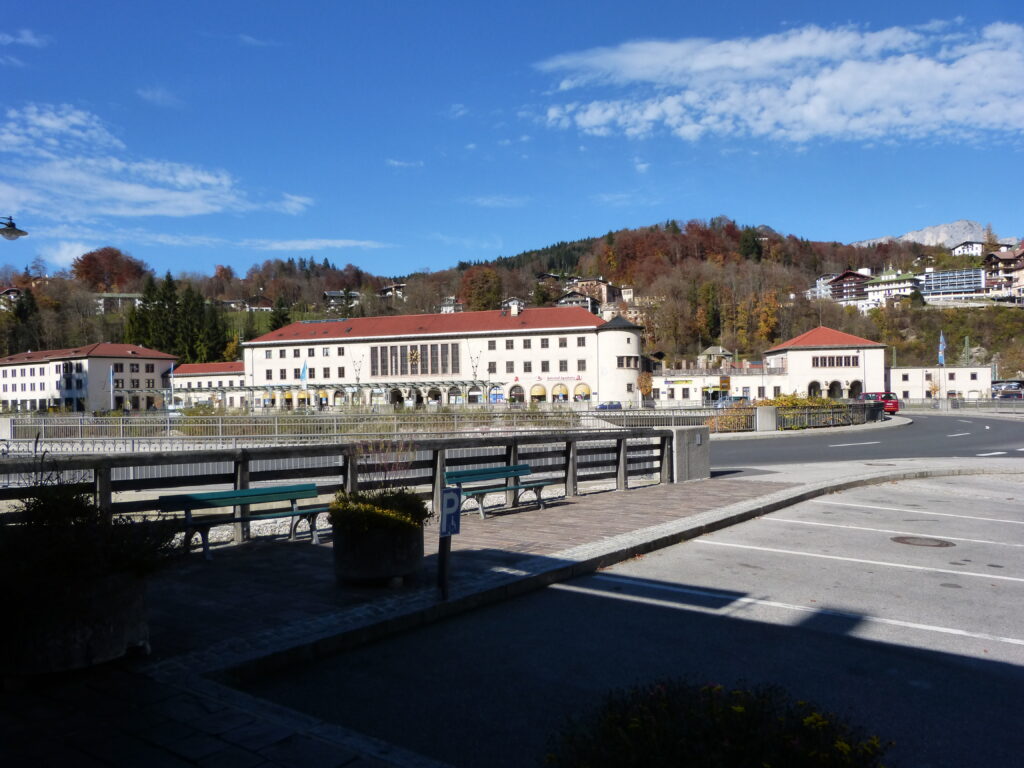
As you can see it’s a pretty long building. It was apparently built that big to hold the enormous crows that would greet Hitler whenever he came to town. To the right of the round tower you will see a small red-roofed section of the structure. This was Hitler’s reception area.
This train station is a Hauptbahnhof, which means “main station” or “central station” in German. One thing I learned while doing research is that Berchtesgaden is the smallest town in Germany with a Hauptbahnhof. My little town, for example, just has a Bahnhof, which is a plain ol’ train station.
After our visit to the train station it was time to start our four-hour tour that included a visit to the Eagle’s Nest. The Eagle’s Nest was a building that was given to Adolf Hitler for his 50th birthday in 1939. I didn’t know this until we took this tour, but the building was never intended as any type of home. In fact, it didn’t even have any bedrooms in it. It was meant strictly as a place to entertain mucky-mucks.
The official name of the building is Kehlsteinhaus. The name comes from the building being situated at the top of Kehlstein mountain, which is just over 6,000 feet high. “Eagle’s Nest” was a nickname given to the place by a visiting French diplomat and it stuck.
It is quite an ordeal to reach the Eagle’s Nest. Once you get to a certain point by bus (you can’t get to this point by private car), you have to either walk uphill or ride an elevator 407 feet up to the building. Luckily our tour included the elevator ride.
This is not a very good photo, but here’s the inside of the elevator, which is the very same one that Hitler rode.
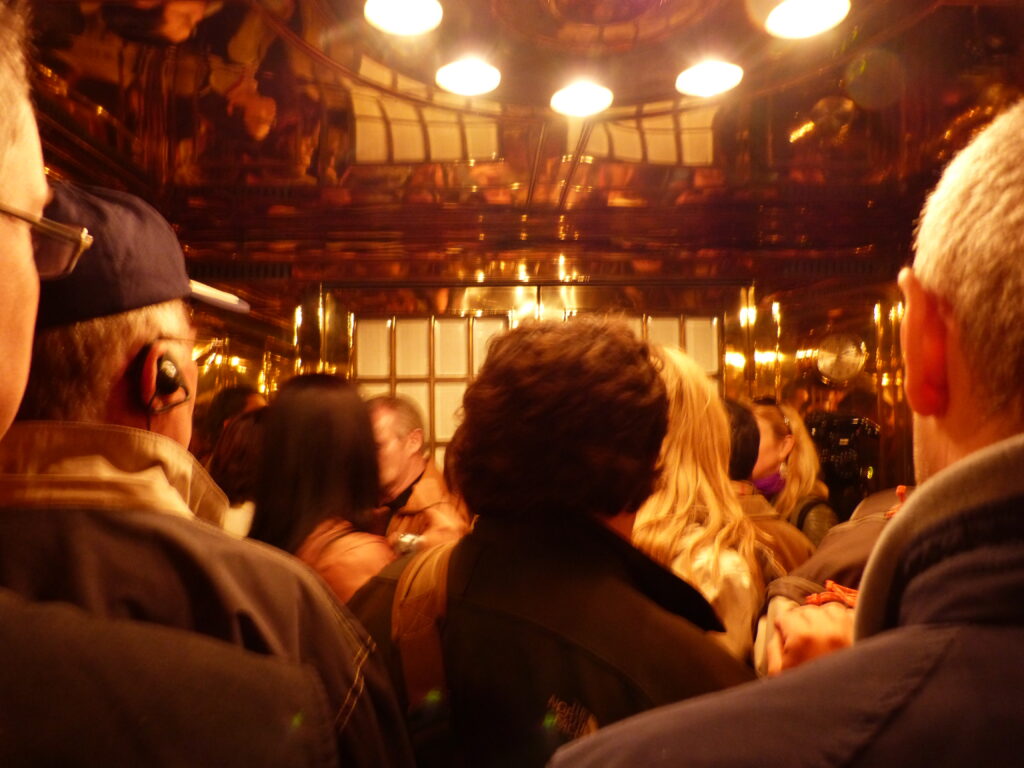
Hitler actually visited the Eagle’s Nest very infrequently. His main residence when he was in the area was called the Berghof, and that is where he spent the majority of his time during World War II. Despite the Berghof having been on the same mountain as and just a few minutes’ drive from the Eagle’s Nest, Hitler visited the Eagle’s Nest fewer than 20 times. (Accounts vary as to the exact number of visits, but all indicate that it was fewer than 20.) Dang, if I gave someone a place like that for their 50th birthday and they were all “Thanks anyway, but I think I’m just gonna hang out here at my other place all the time”, I’d prolly be kinda pissed.
Anyway, our tour guide said that Hitler’s excuse for not visiting the Eagle’s Nest more often was that he was just really busy what with running the kids to soccer and band practice and volunteering at their schools and all. Wait, no, that’s not it. It was that the air was too thin up there and he couldn’t breathe. Yes, that’s supposedly what he said. In reality, he was apparently both claustrophobic (didn’t like the elevator ride) and afraid of heights. By the way, he also did not drink or smoke and was a strict vegetarian.
This next bit of news is rather stunning to me and I came across this while doing research. I thought at first that it had to be a joke, but apparently not. It seems that Hitler’s Berghof was actually featured in Homes and Gardens magazine in 1938. https://flashbak.com/in-november-1938-homes-and-gardens-visited-hitlers-home-in-the-bavarian-alps-31137/ It is just surreal to read the article, which you can check out here (Even more stunning – when I was looking for other websites that mentioned this article, I came across a Pinterest page with all kinds of Hitler info and photos. I’m not a member of Pinterest but from what I’ve seen its members share on Facebook, I thought Pinterest was all about recipes and home decorating and crafts, not about crazed dictators. Huh.)
Anyhoo, the Eagle’s Nest today is a restaurant and is surrounded by yet more fabulous views. The tour guide allowed us 45 minutes to wander around there, which was great because it was such a beautiful day.
Here’s a shot of the Eagle’s Nest.
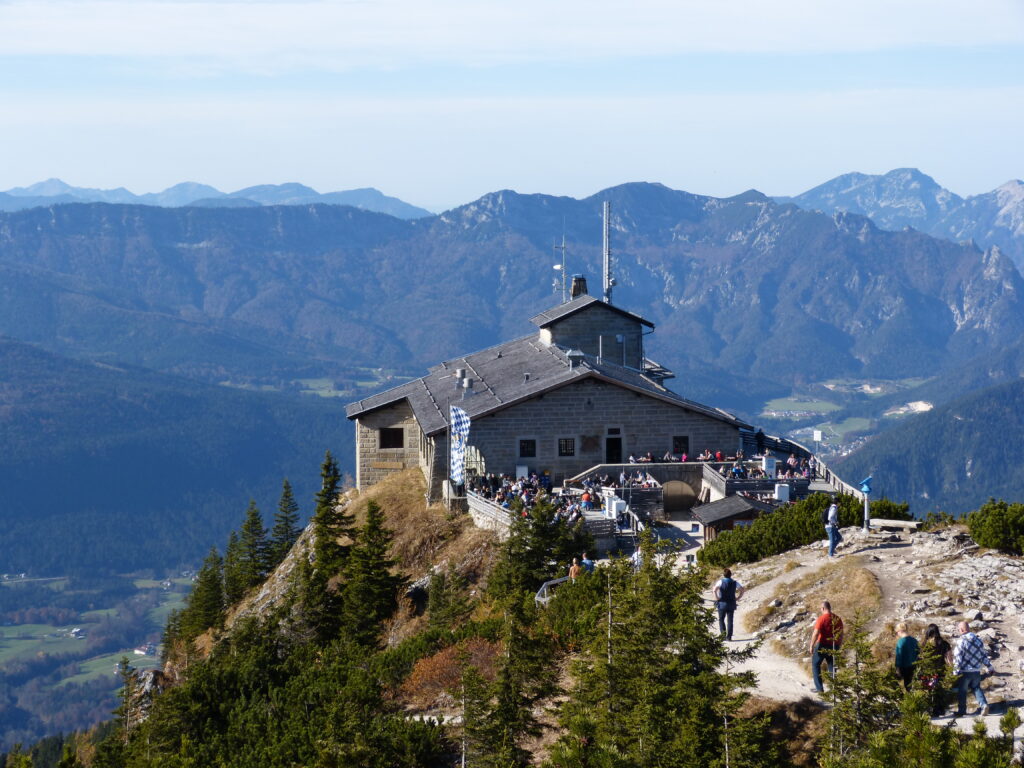
All those people that you see right outside the building are having a bite to eat and/or something to drink as that’s part of the restaurant’s outdoor seating area.
You may wonder how the Eagle’s Nest survived WW II. Well, part of the reason is that the building is a relatively small target. Bombing during WW II was just not an exact science so it was easy to miss. Also, you may notice that the building’s color sort of blends in with the color of the mountain, so it was difficult to see from the air.
The Berghof, on the other hand, was destroyed, having been bombed in April 1945 and set on fire in May 1945. Finally, its ruins were blown up in 1952 by the Bavarian government, who did not want the place turning into an attraction for Neo-Nazis. Most of the other buildings in the area that were associated with Nazis were similarly destroyed, including the SS barracks and the home of Hermann Göring.
Back to the Eagle’s Nest, you can see that I took that last photo standing higher than the building. There is a slight uphill path that you can walk and I just loved that this couple had hiked up there and taken a seat to drink in the scenery.
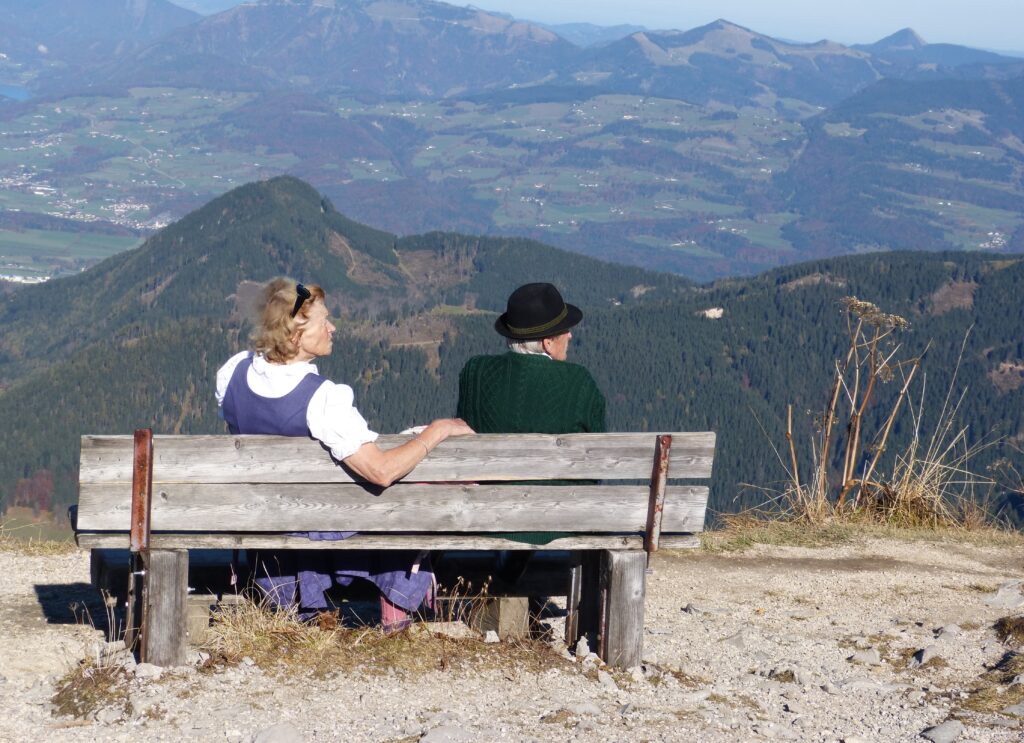
Here’s Sean standing next to a cross near the top of the path.
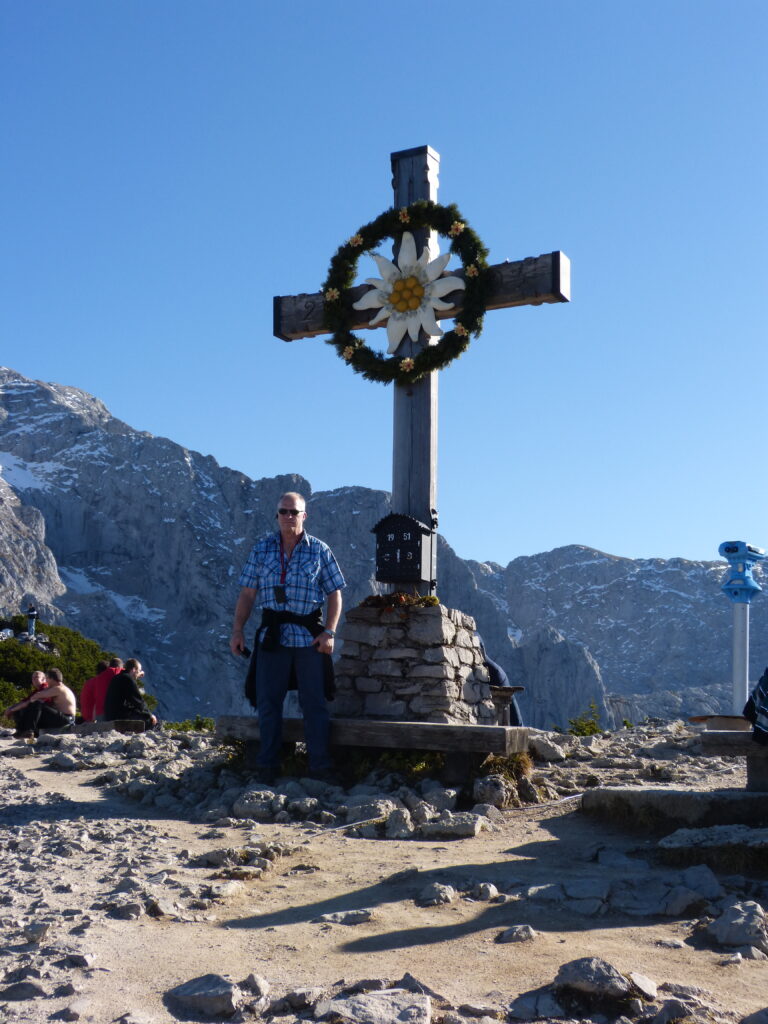
The tour guide had mentioned that the cross was placed there to honor the lives lost during the war.
Here’s another view looking down at the Eagle’s Nest and the valley below.
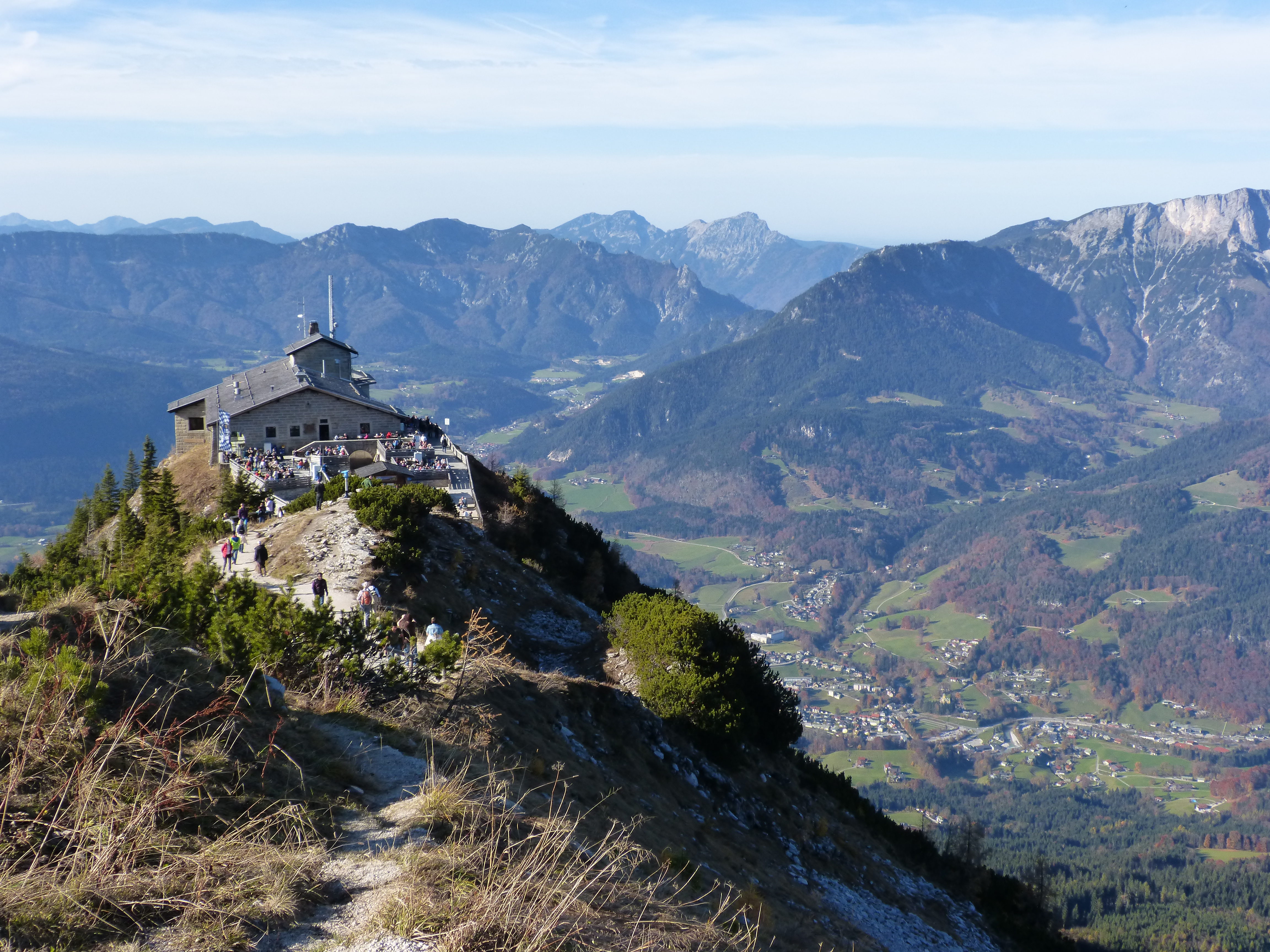
And here’s me at the Eagle’s Nest.
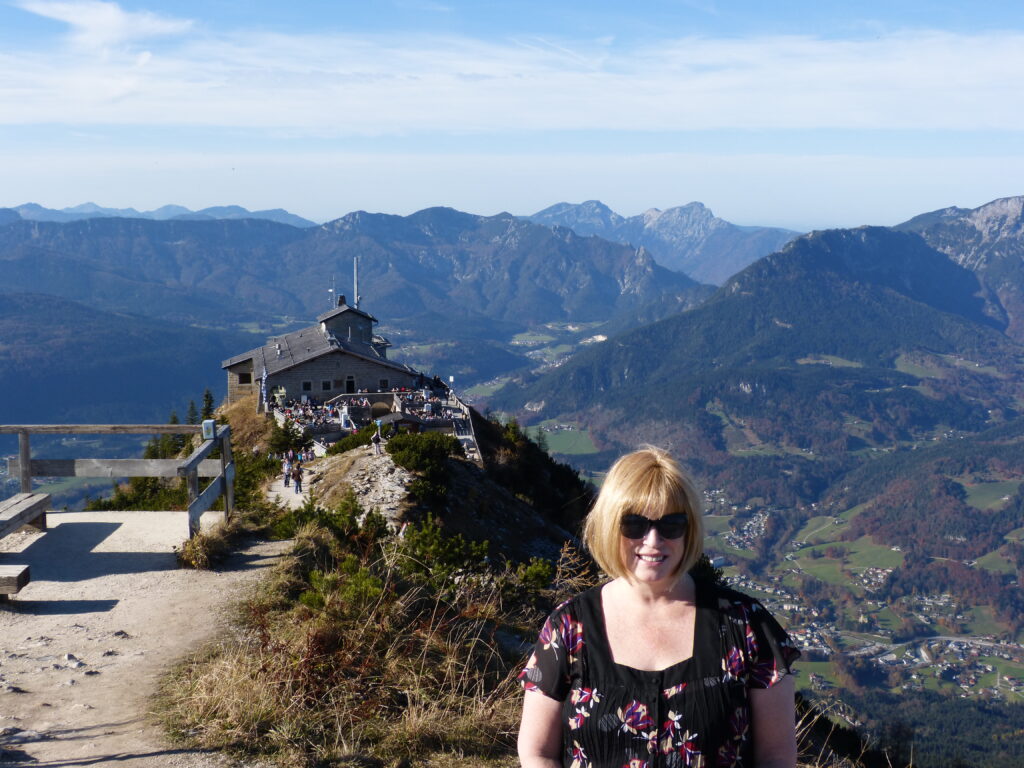
There is not a whole lot to see inside the Eagle’s Nest unless you take an official tour given by the Kehlsteinhaus. That added tour was not part of the tour we took. The reason that not just anybody can give a tour is again fear of Neo-Nazi’s – they don’t want sympathizers taking over the place.
You can, though, see this original fireplace which was a gift from Mussolini, one of Hitler’s dictator buds.
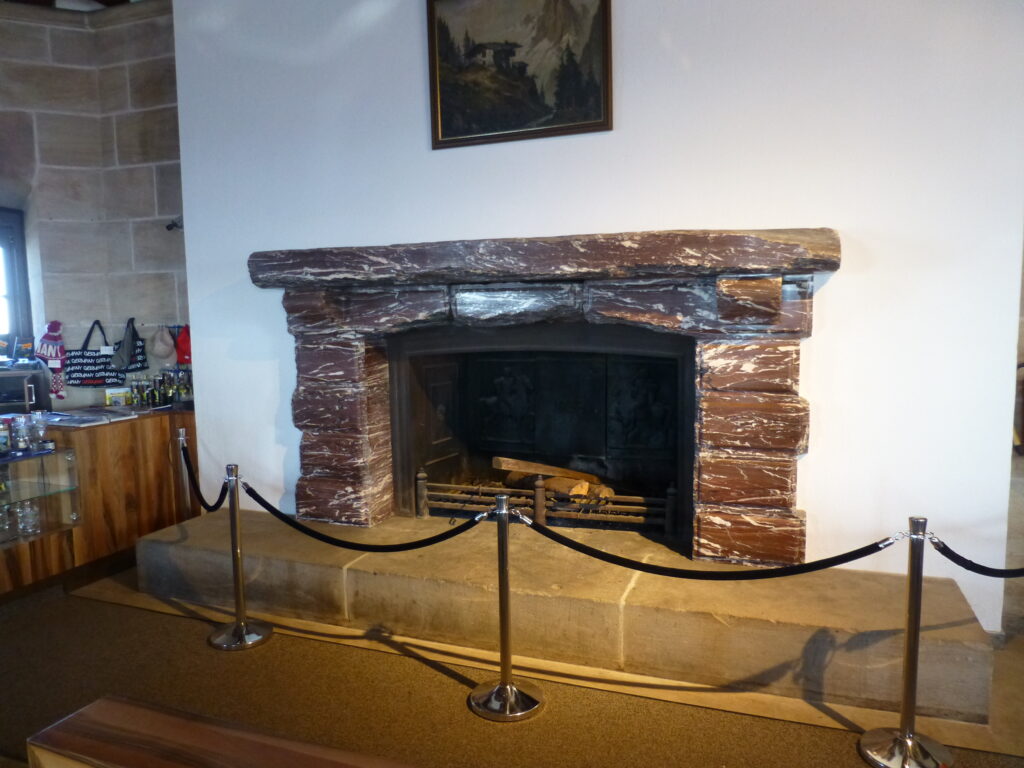
There was a lot of damage to the fireplace after the war, which is why it’s roped off now. The damage was caused by Allied troops chipping away at it to take parts of it home as a souvenir.
The light fixtures you see here are also original.
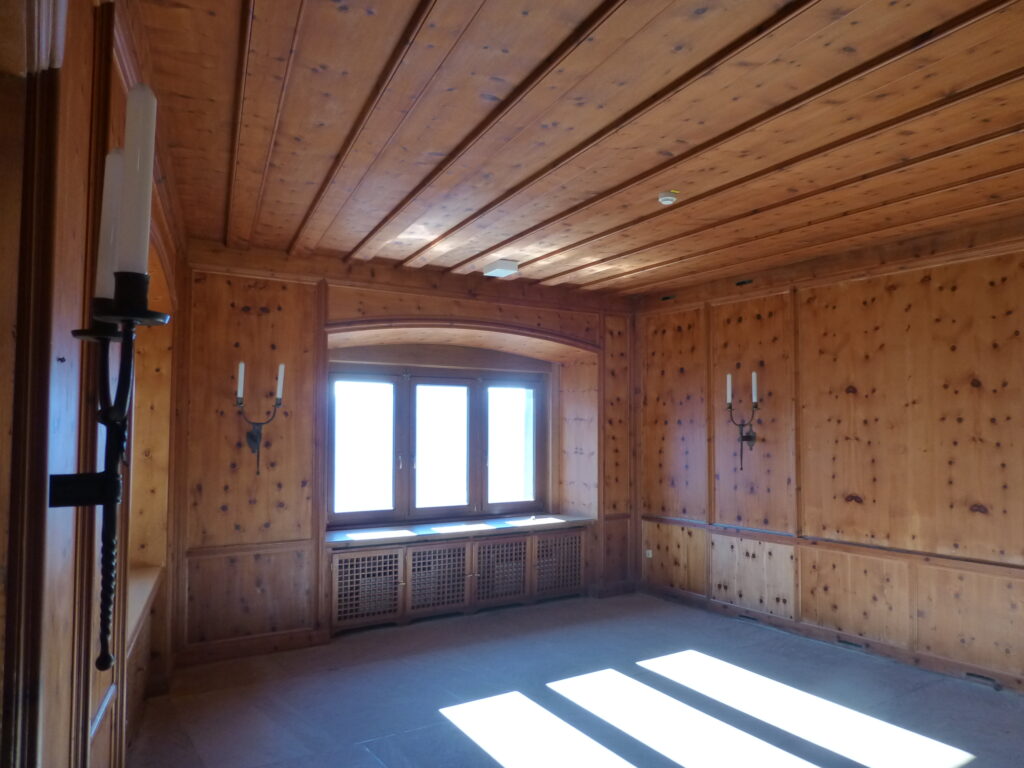
Because we had plenty of time before we had to meet the tour guide again, we had the option of either sitting and having a drink outside at the restaurant and then taking the elevator back down, or of walking back down. Believe it or not we opted to walk back down.
Here’s a view looking back up at the Eagle’s Nest. You may be able to see more clearly in this photo how its color blends in with the mountains.
I won’t bore you with too many scenery photos from our walk down, mainly because my photography skills can’t do justice to the scenery. You’ll just have to take my word for it that the views were once again stunning.
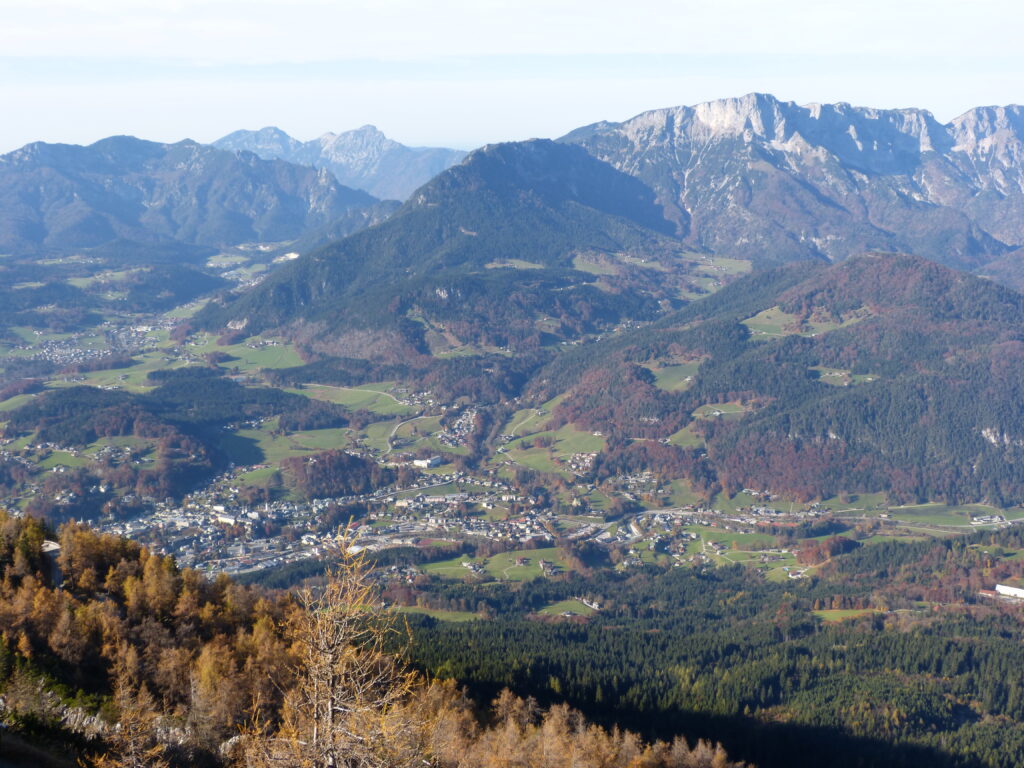
If you ever get a chance to visit the Eagle’s Nest, I highly recommend walking back down the mountain to the bus if you have enough time. Of course if you have a lot of time and are very physically fit you could also walk up, which we did see several people doing.
Or, if you like, you could just do what this person did.
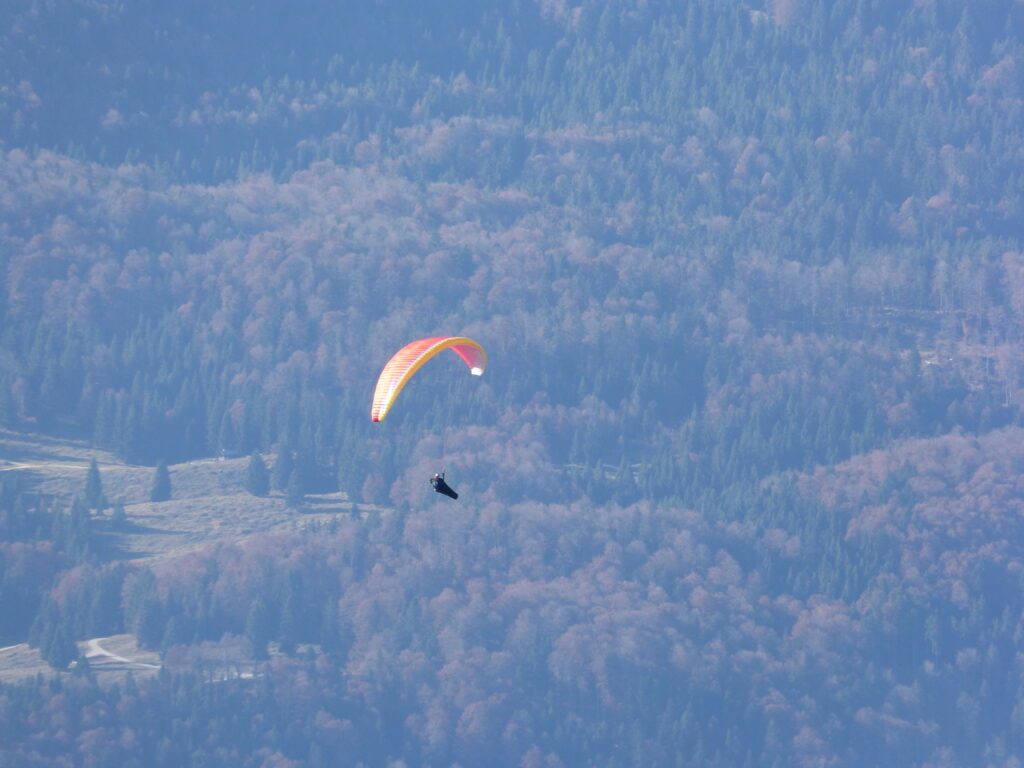
Doesn’t that just look like an amazingly peaceful thing to do?
We did run across a teeny tiny bit of leftover snow as you can see here.
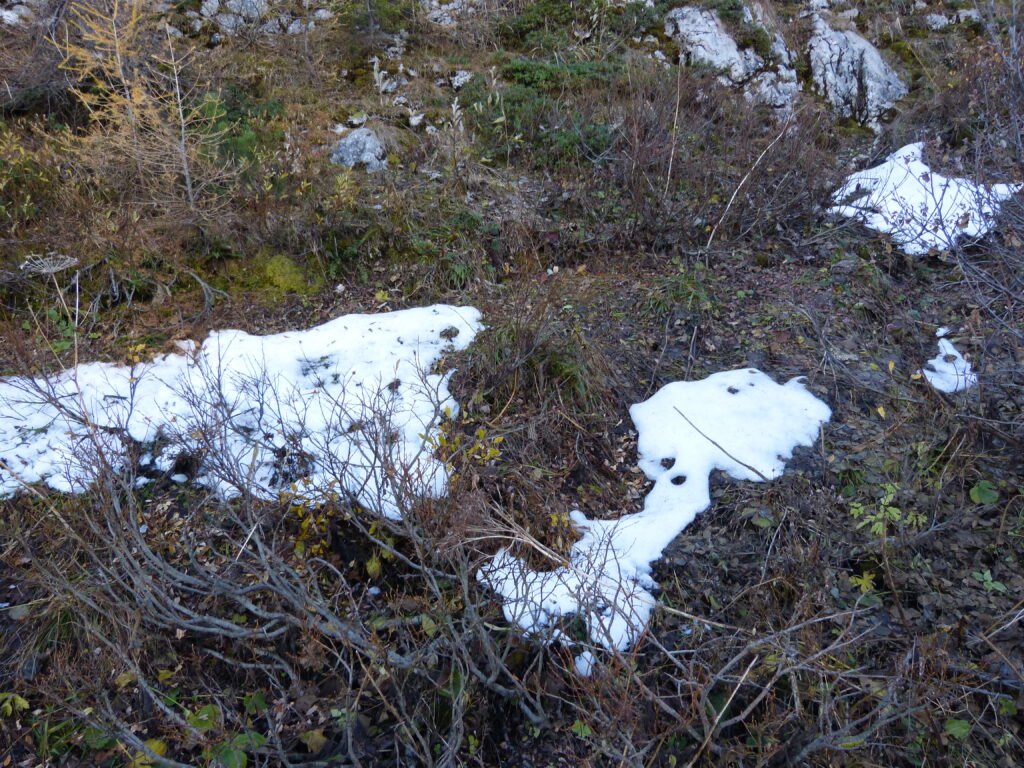
We really got so lucky with the weather on our visit. Even the tour guide commented numerous times about how it was the most gorgeous day there in quite a while. Apparently it’s very often foggy or cloudy, especially on top of the mountain. We were especially thankful to have the weather we did so late in the season. You can visit the Eagle’s Nest only from May through October, so we were there in the last week of the season.
The tunnel shown here is the one you have to walk through to get to the elevator that takes you up to the Eagle’s Nest.
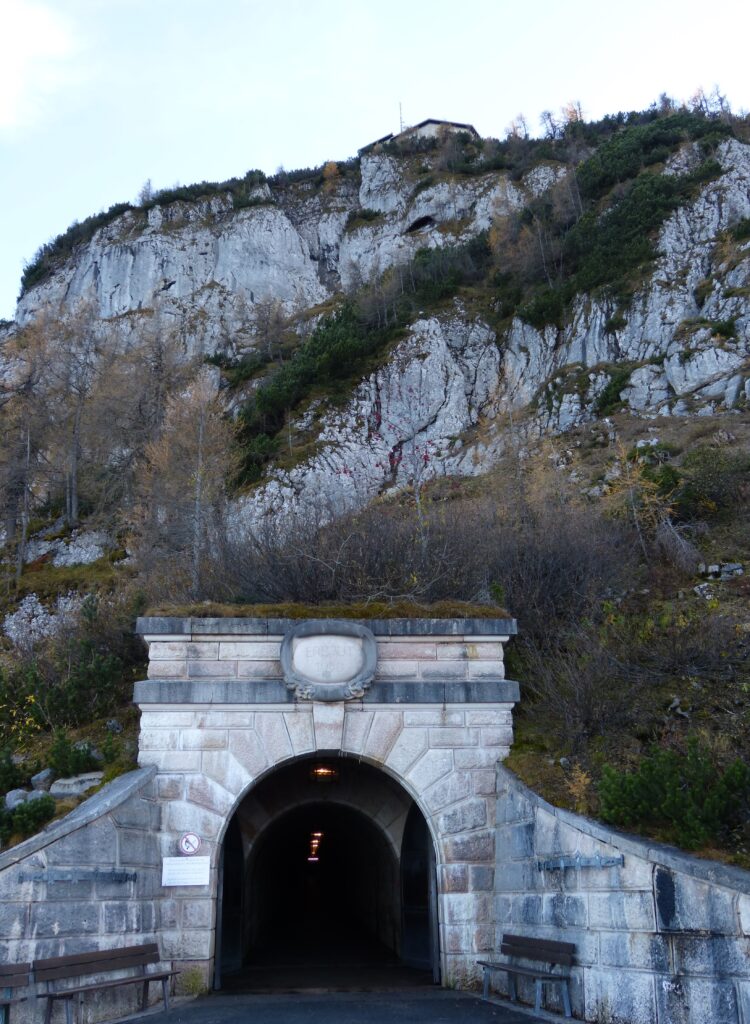
We commoners have to walk through the tunnel, but when Hitler visited he was taken through in his limo. The tunnel was built in 1938 when construction on the Eagle’s Nest was started. It’s located right where the bus drops you off.
This building was the last stop on our tour and it’s a museum called the Documentation Center.
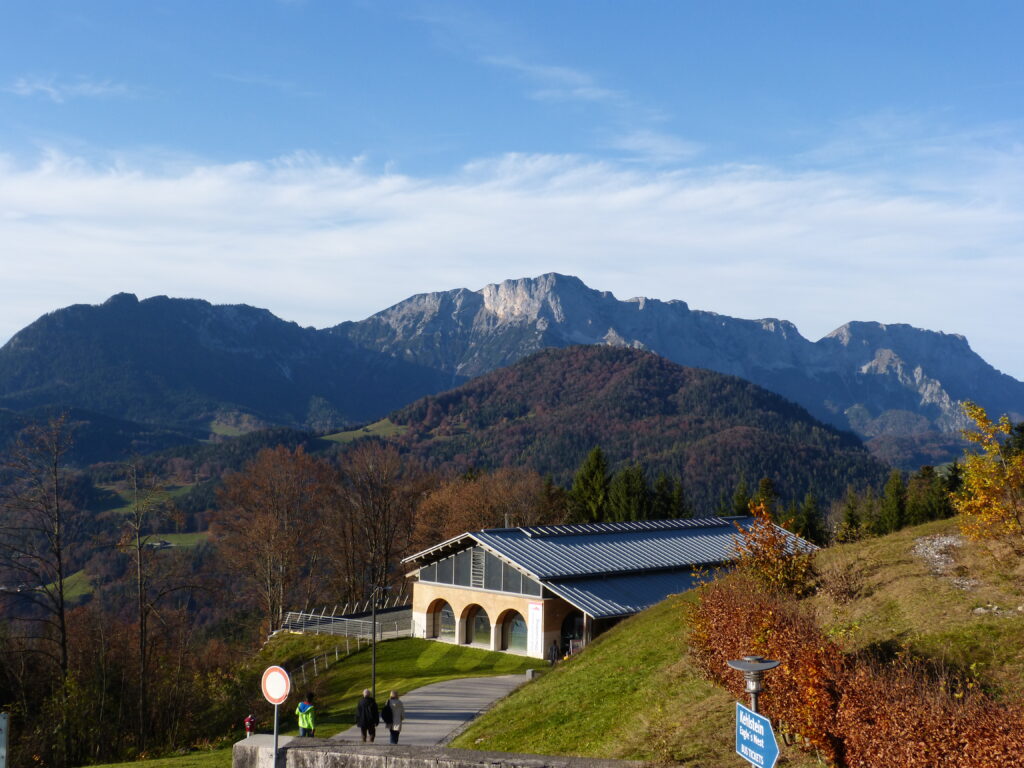
This area is where you catch the bus up to the elevator that takes you to the Eagle’s Nest. We spent a short time in the museum while the tour guide pointed out certain items of interest such as photos, maps and letters. Although most of the exhibit explanations are in German, if you go here on your own you can rent an audio guide that gives the explanations in various languages.
The majority of our time at the Documentation Center was actually spent underground in the bunker system, part of which you can see here.
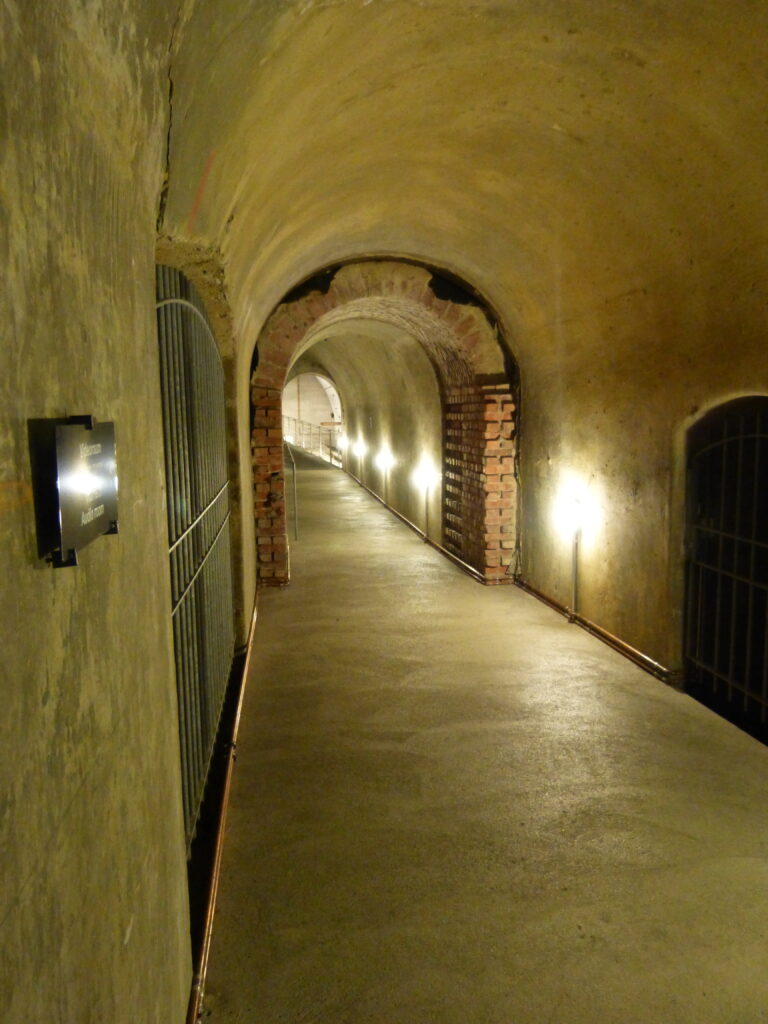
I have to admit that I did get a little nervous when the tour guide took us down there and told us all to line up against the wall. Just kidding. I think.
If you’re like me, you probably knew about the Führerbunker in Berlin where Hitler was holed up and then took his own life at the end of the war, but you may not have known about the extensive bunker system in Obersalzberg, the area in which Berchtesgaden and the Eagle’s Nest are located. I didn’t know about these bunkers until we booked this tour. In any case, it was a pretty amazing system but it was never really used by the Nazis. However, during air raids in the area in April 1945, over 1,000 workers hid out in these bunkers and survived.
All in all it was a very good and informative tour.
After we got dropped off back at the TI, we walked back to the hotel. On the way back, we stopped on a little covered bridge spanning this stream.
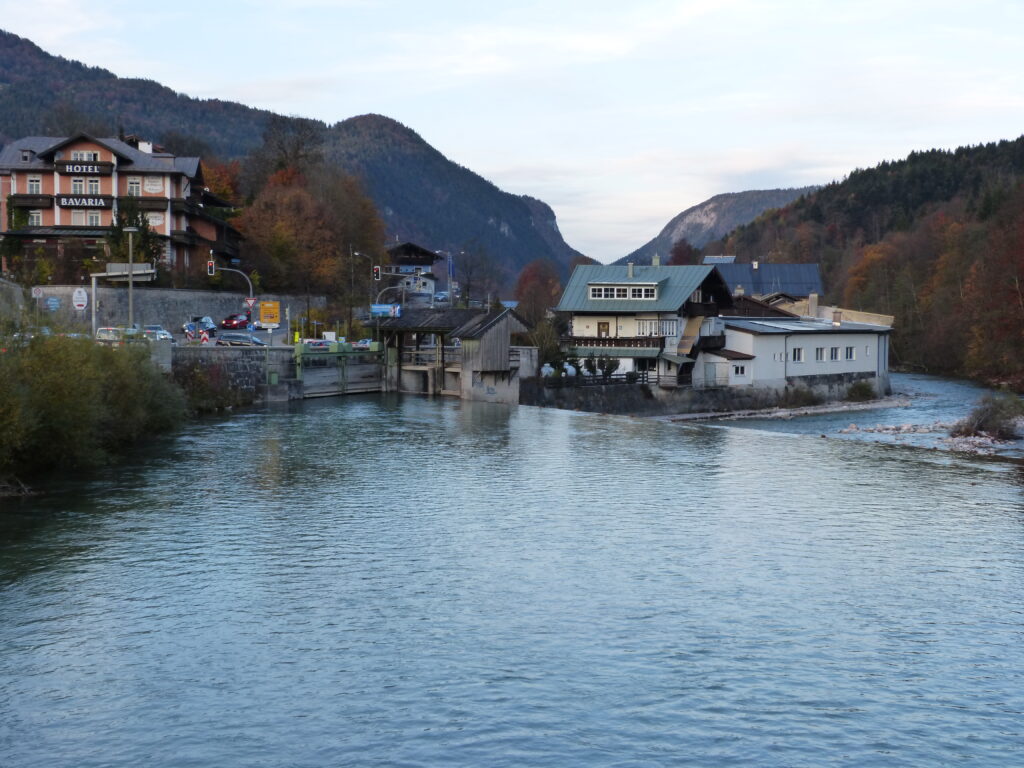
The Hotel Bavaria that you see on the left-hand side is where we stayed.
I was kind of beat after a long day of sightseeing and didn’t even feel like going out for dinner. Sean went out to a local Getränkemärkt (beverage store) and picked up some adult beverages. We just stayed in the suite, had a few beers, munched on some snacks we’d brought along with us, and called it a night fairly early.
The next morning after breakfast we checked out of the hotel. Before heading home, we went back to the Königssee to take that boat trip that I mentioned at the beginning of the blog.
This was the guy doing the narration on the boat tour and I took a photo of him because I was fascinated by his hair.
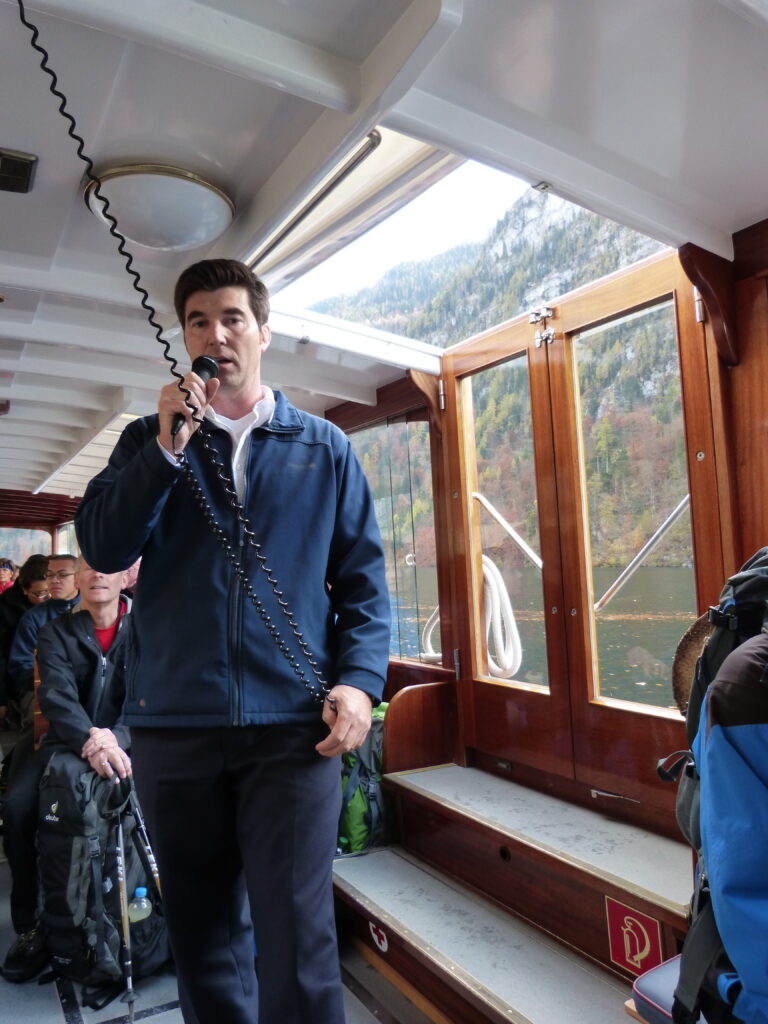
Apparently the narration is rather amusing as all the German-speakers were chuckling away, but we unfortunately don’t understand enough German to get the jokes. I’ll give you a tip, though, in case you ever take this boat trip. We had picked up a little brochure called “Welcome to Lake Königssee” but I didn’t really look at it until just now while writing this blog. The brochure lists 16 points of interest during the boat trip, and from what I did understand from the German narration, the brochure has pretty much the same info. Except for the jokes. You can also download an audio guide app if you have an iPhone and it will give you the information as well.
At one point during the tour, the boat stops and the narrator breaks out a flugelhorn (similar to a trumpet) and plays a song. You can hear the song echoing off the cliffside called the Echowand and it’s pretty cool. The narrator then goes around collecting tips for his performance and on a full boat I’m sure he collects a good 25 to 50 Euro per trip. Even making just a few trips a day would earn him a pretty penny. I could just imagine the narrator saying to his mother “You were right, mom, those flugelhorn lessons really DID pay off!”
You can watch a video (not mine) of the Königssee flugelhorn performance and listen for the echoes here: http://www.youtube.com/watch?v=PVHhmQq-acs
At this time of year, the boat goes only as far as St. Bartholomä, a peninsula with another pilgrimage church of the same name shown here. The trip to this point takes about 35 minutes.
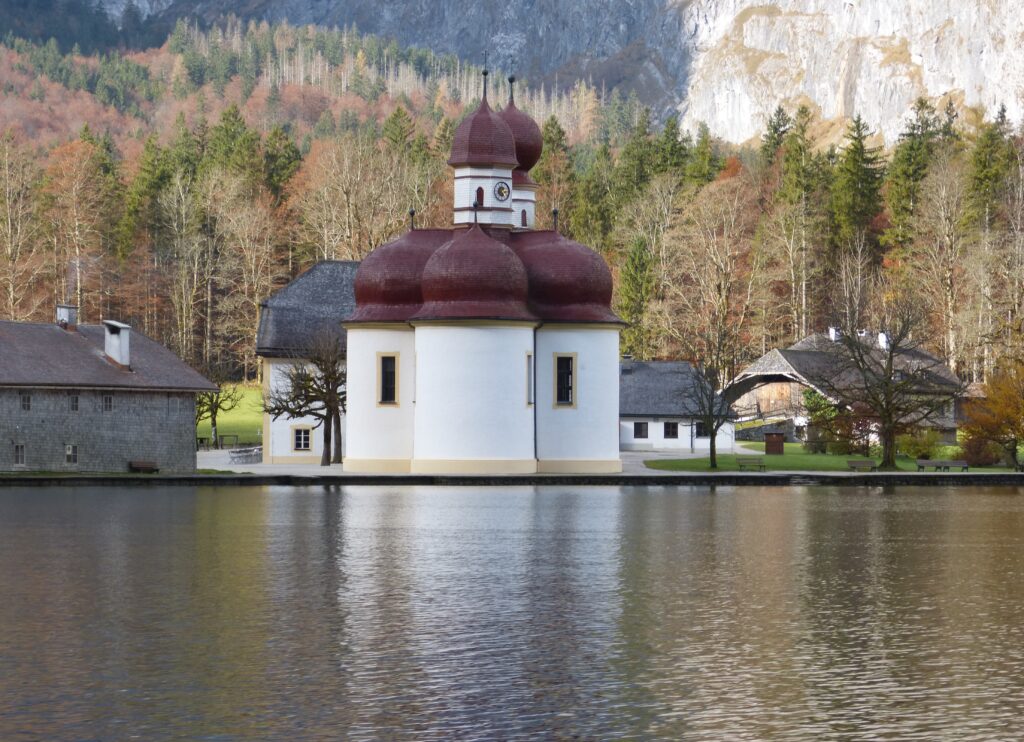
Most of the people on the boat appeared to be going over to this location, and many people were carrying huge packs that seemed to indicate they were going overnight camping.
Because we had a 5-hour drive ahead of us, though, we really didn’t have time to stay and explore. At the risk of sounding like a broken record, the scenery here was amazing.

The whole area is located within the National Park Berchtesgaden and is just beautiful.

We ran across this sign just after getting off the boat.
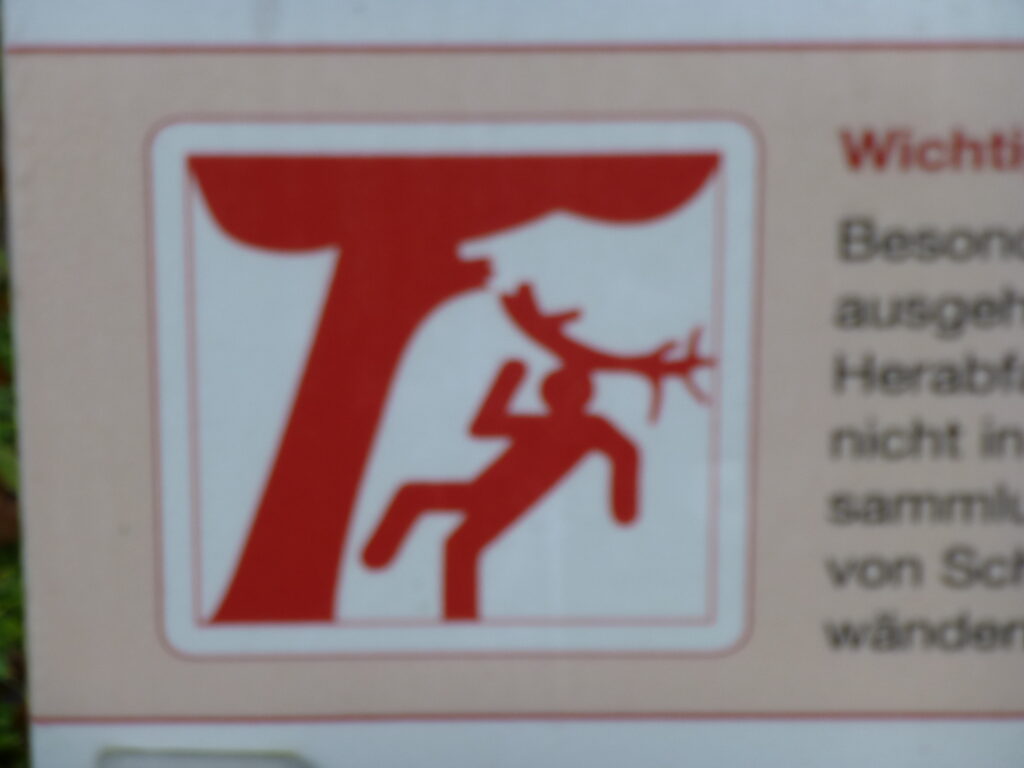
Sean thought maybe it meant “Danger: Standing under this tree may result in your head sprouting moose antlers.”
We spent only about half an hour on the peninsula and then caught the 10:40 boat back. It was kinda nice because we were the only two passengers on the boat.
Here’s a view from the boat looking back at the church.
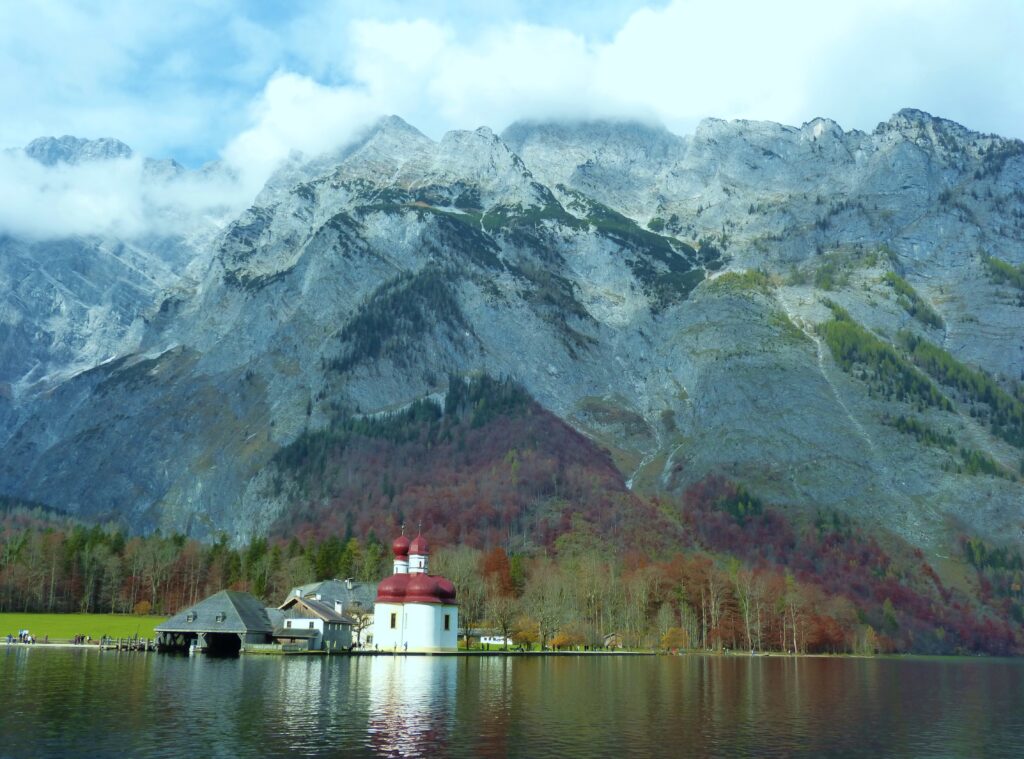
And here’s what the boats look like. This one was passing us going the other way.
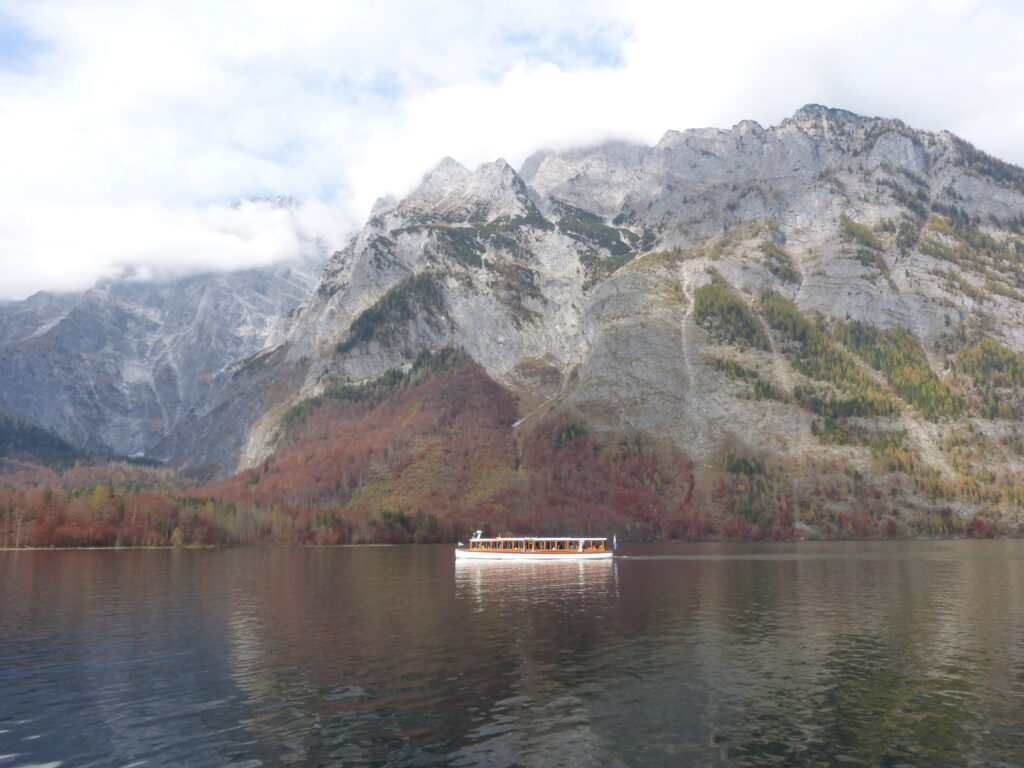
This is a little stop on the route called Kessel. The stop is only used when required. Our boat didn’t stop there on the way to St. Bartholomä, but this boat was stopping on the way to pick up a hiker. There is some method (I don’t know what it is, though) for hikers to call to be picked up so the boat captain knows when to stop.
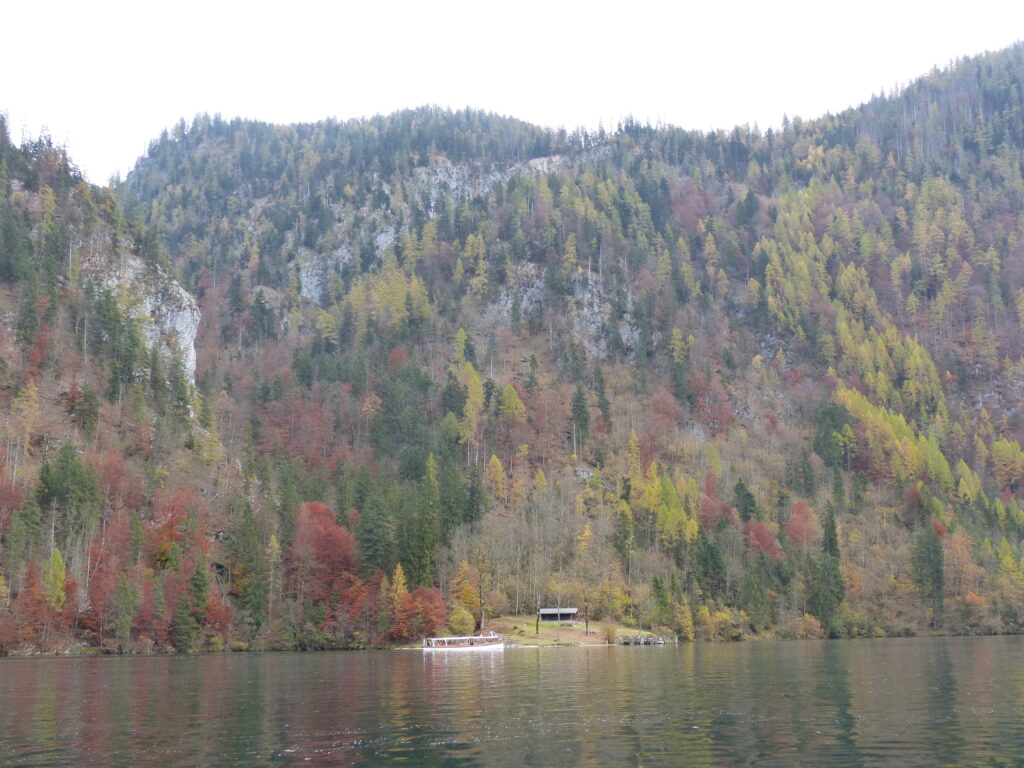
It’s probably a little difficult to make out in this photo, but this is a waterfall called Königsbachfall. The brochure says it “originates at 1600 m” (m is meters), which is over 5,000 feet.
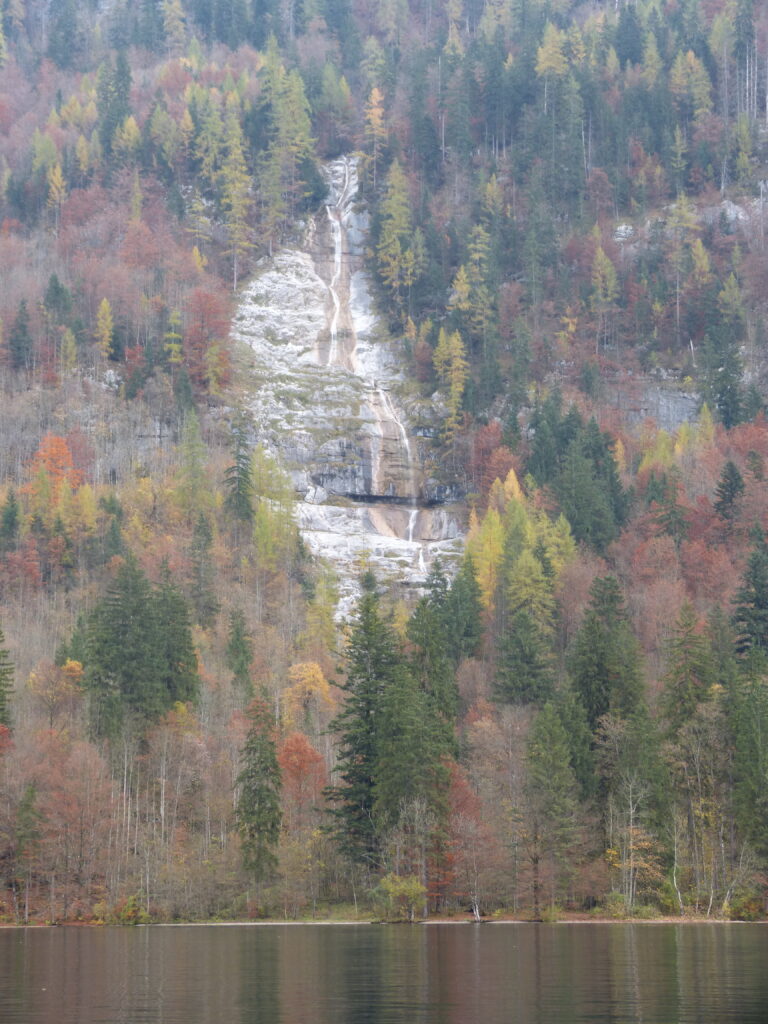
Here’s another boat approaching us. The buildings you can see in the background are in the area from which the boats depart.
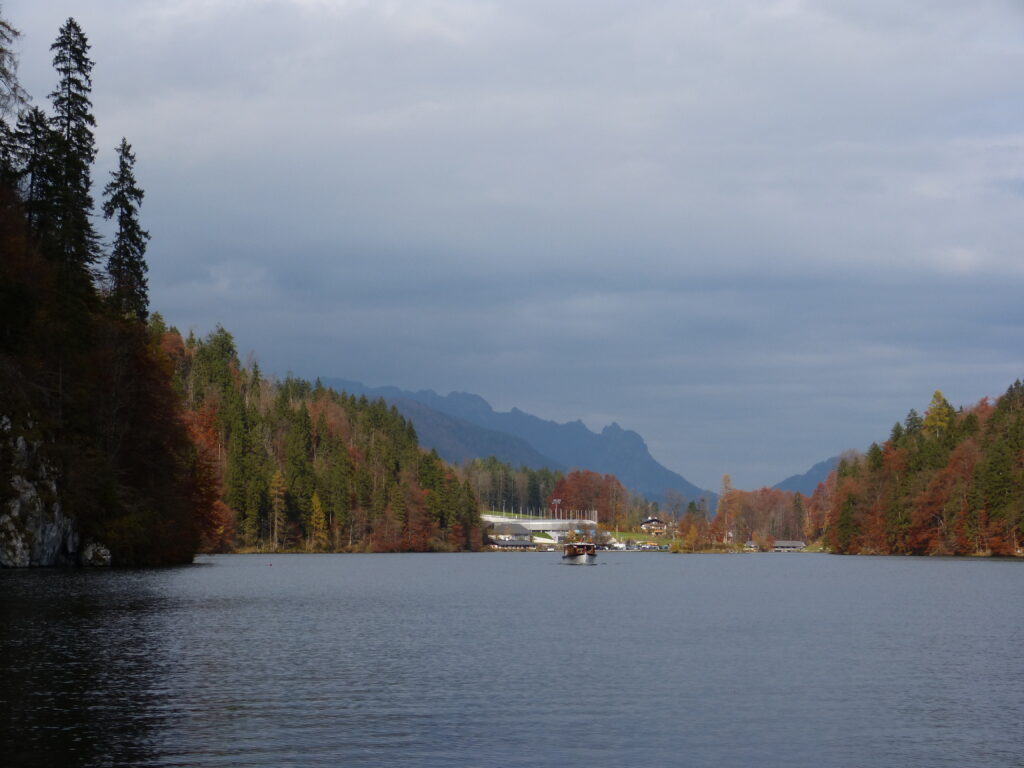
This cross at the foot of the cliffs memorializes 70 pilgrims who drowned when their boat shattered at this spot during a thunderstorm in 1688.
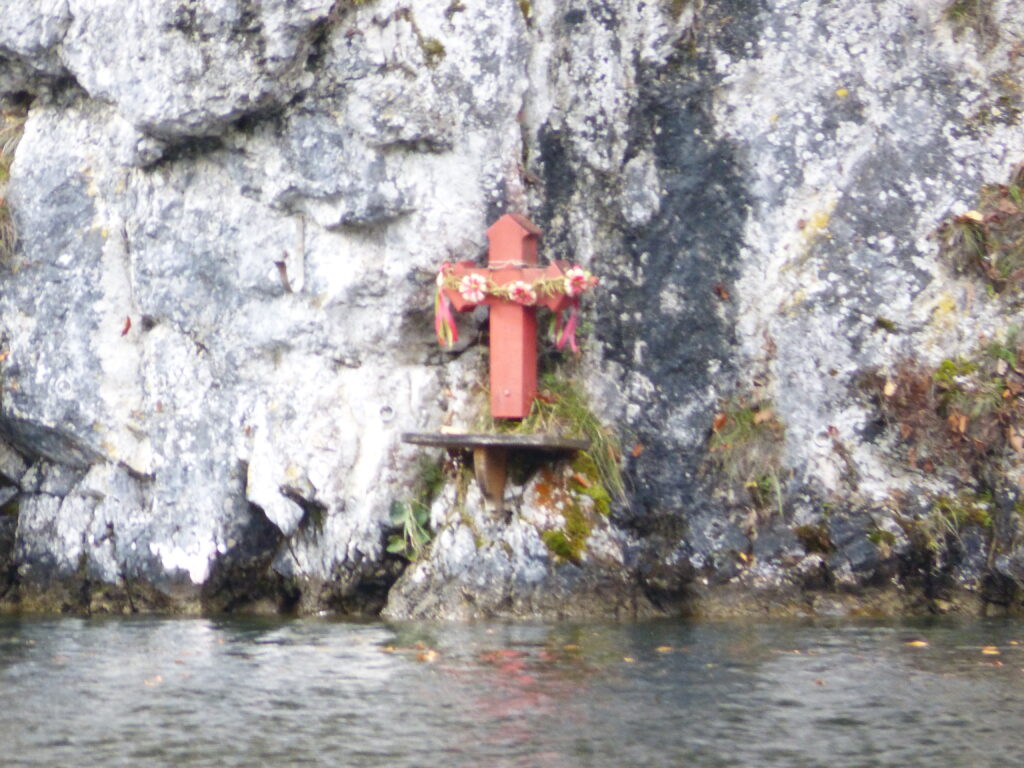
Shown here is Christlieger, which is the only island in the Königssee.
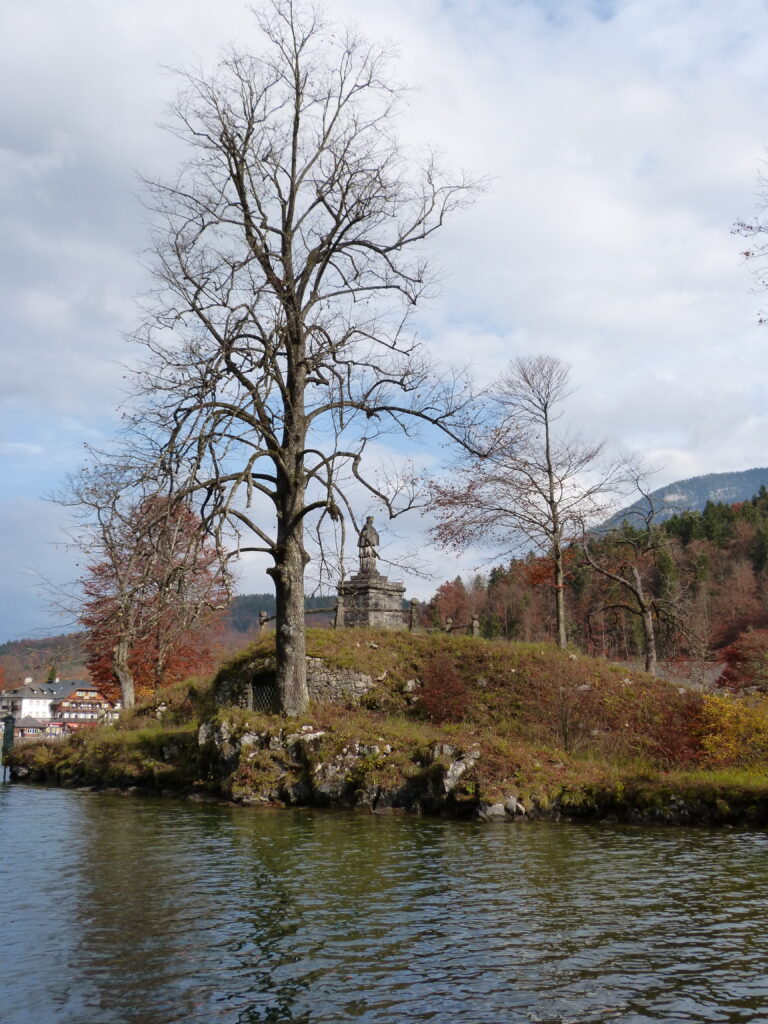
You may be able to make out the marble statue of John of Nepomuk, a Czech saint. If you’ve been to Prague, you might have seen another statue of him on the Charles Bridge, from where he was thrown to his death into the Vitava river. He is a patron saint “against the dangers of the water” according to Wikipedia.
Back on land, that concluded our trip to Berchtesgaden.
On the drive back home, we made a little detour to this town.
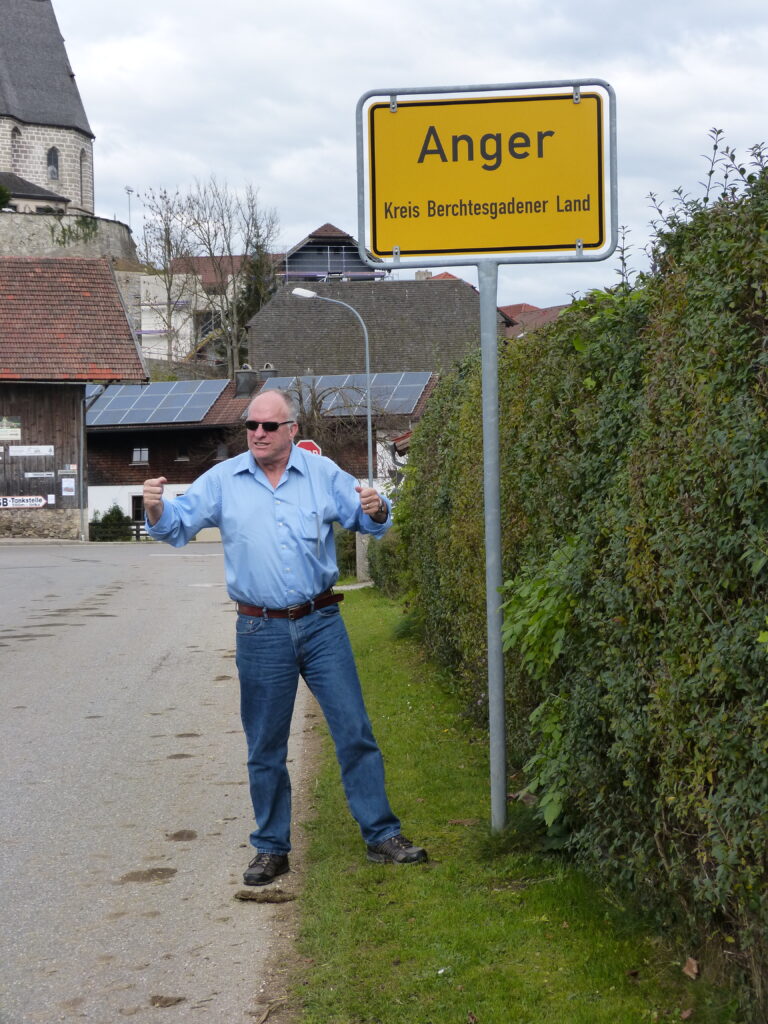
In case you didn’t guess, that’s Sean putting on his angry face in Anger.
This is the nice-looking church in the town of Anger.
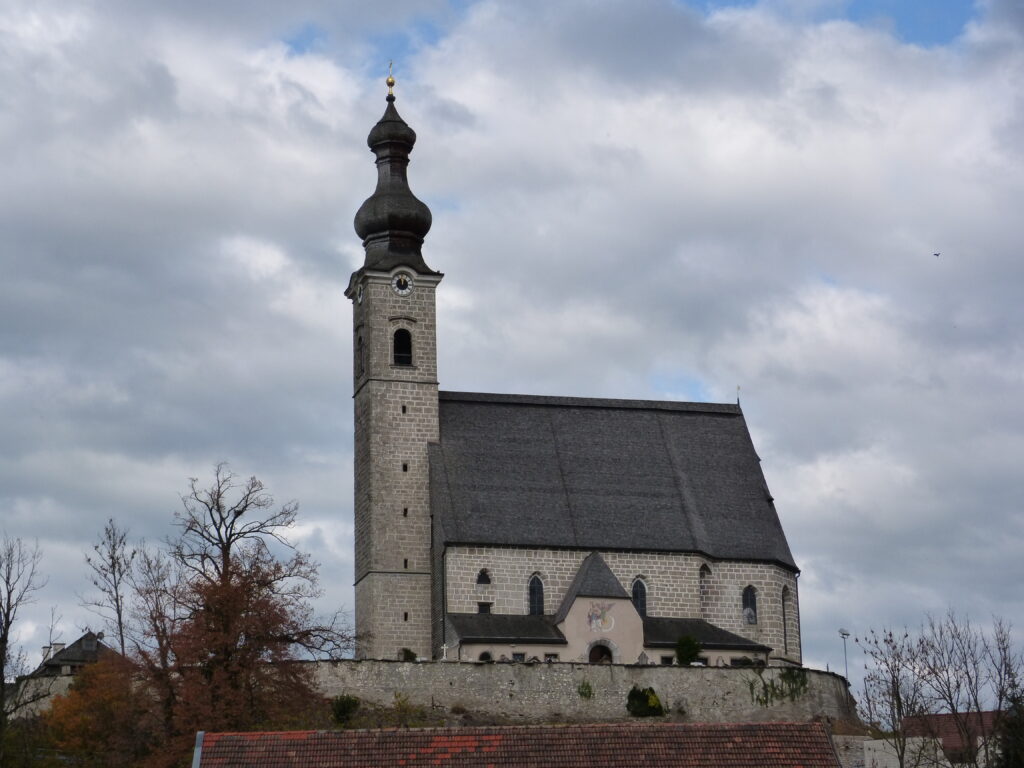
About halfway home we stopped at a rest area to put gas in the car and oddly enough there was a model of the American Saturn V rocket.
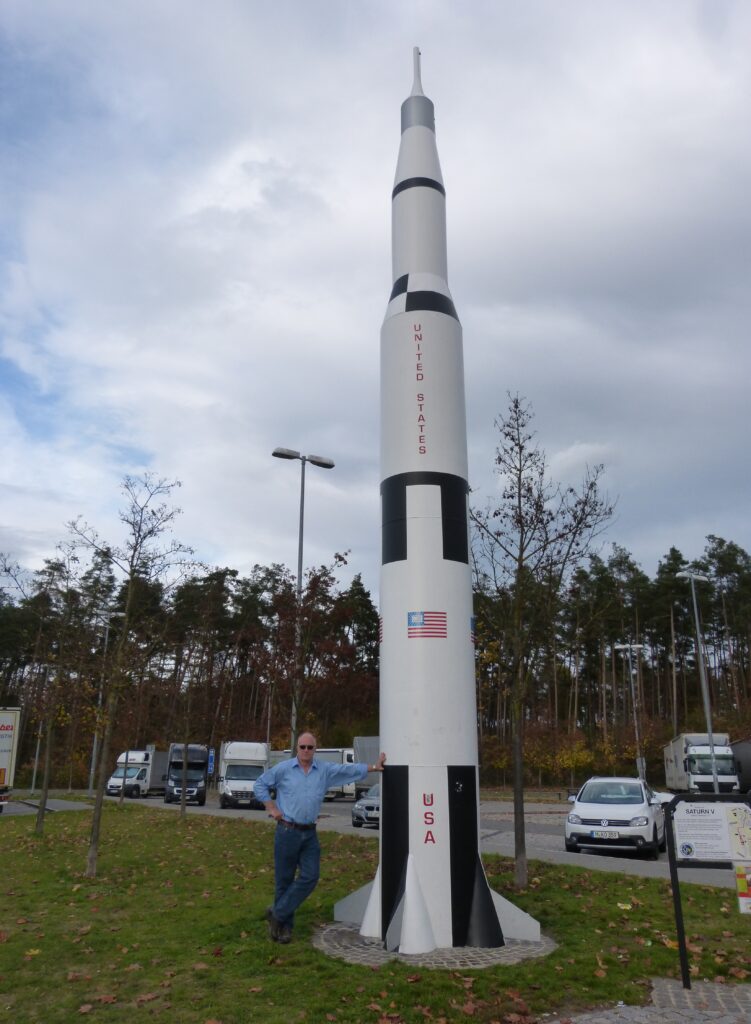
Well, maybe not so odd. The Saturn V was designed in part by Wernher von Braun. He was born in Germany and is called the “Father of Rocket Science”. A sign near this model mentioned the Hermann Oberth Space Travel Museum. Hermann Oberth was also German and another founding father of rocket science. He worked with Wernher von Braun, who was his former student, to develop rockets for NASA.
So, that was our weekend trip and I hope you enjoyed reading about it!

